It’s no surprise that gastronomy is one of Japan’s great attractions. If you like to eat, you’ll have a great time in the Land of the Rising Sun, thanks to its varied and delicious cuisine. Fortunately, most of the restaurants you’ll find will have menus with photos, to make everything easier when ordering.
So, to ensure you are prepared, we are going to review the most common dishes (and also some lesser-known ones) of Japanese cuisine, which you should not miss on your trip to Japan.

Of course, this is an incomplete guide, because it would be impossible to compile all the hundreds of different dishes and ingredients that populate Japanese tables.
We simply wanted to make a small selection of the most representative ones, as an introduction, so that you get an idea of the wonders that the Japanese islands offer when it comes to food.
As in other parts of Asia, noodles of all kinds are one of the staples of the local diet in Japan. You’ll find them everywhere, and there are hundreds of styles and variations of how to prepare them. Below we detail some of the most typical specialties.
Ramen is undoubtedly one of the most popular dishes. It’s what everyone wants to try when they visit Japan for the first time.
It’s a bowl of noodles (usually wheat) swimming in hot broth, with its toppings and various toppings. Don’t miss the poached egg (onsen tamago) or bamboo shoots (menma).
There are a ton of varieties of ramen, some heartier and some lighter, but the most common ones are: Shoyu ramen (soy broth), Shio ramen (broth with a pinch of salt), Miso ramen (miso-based broth), and Tonkotsu (pork bone broth).
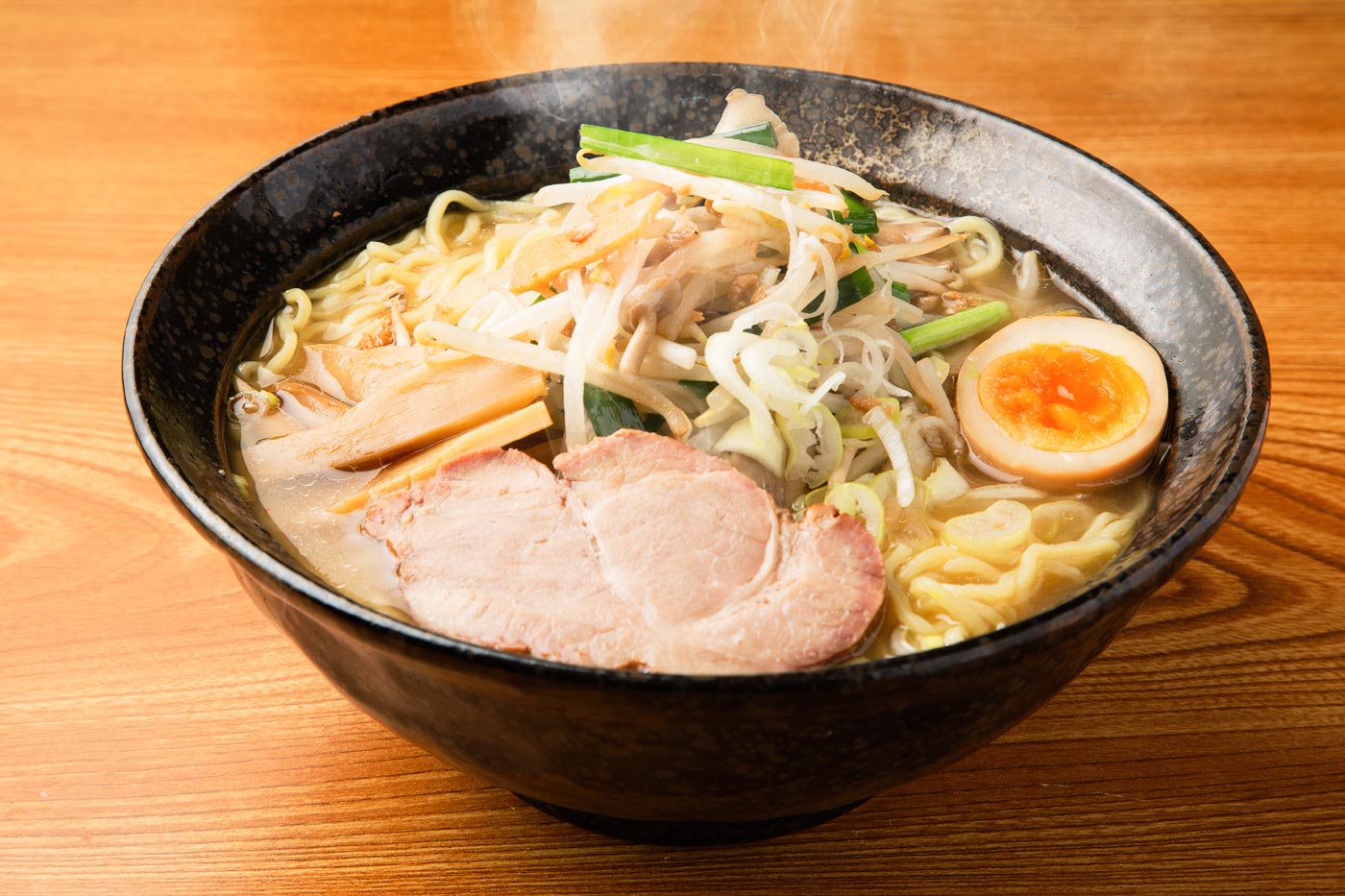
Every region, every city, every Ramenya (ramen restaurant) has its own style. There are hundreds of variations, all surprisingly different from each other.
But if you are a completist and want to try them all, don’t worry! In big cities like Tokyo, you can enjoy ramen in the style of every corner of Japan, without having to go around too much.
Tsukemen is a variation of ramen in which the noodles and broth are served separately. The trick is to slowly pick up the noodles with your chopsticks and dip them in the broth before eating.
Both the noodles (which are quite thick) and the soup are usually heartier than in regular ramen.
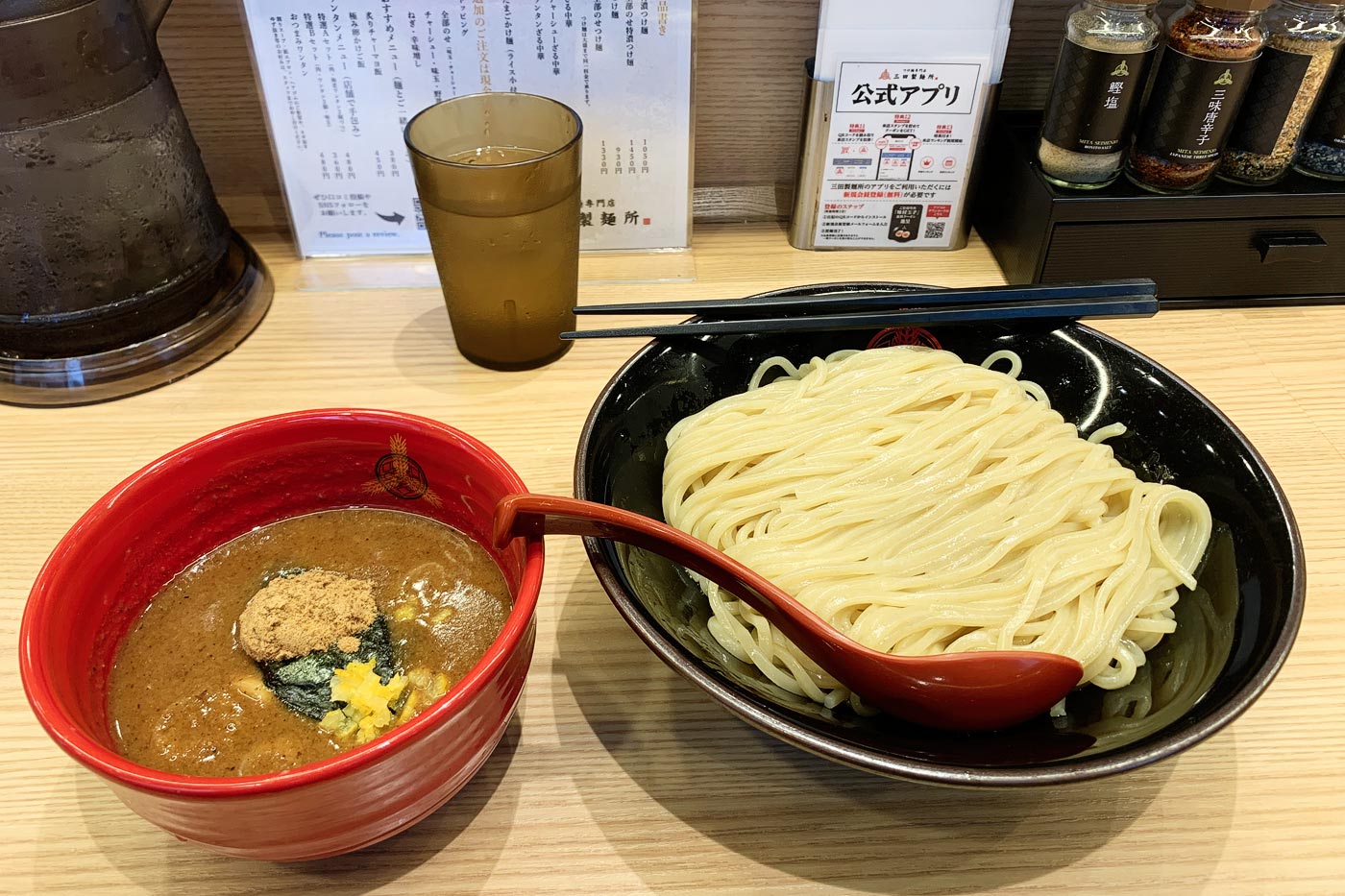
This version of ramen is eaten with very little broth, and the noodles are usually quite thick. Although it is called “soba,” it is actually just another type of ramen.
The scant broth is quite oily (hence the name of the dish; “abura” means oil in Japanese) and sometimes a bit spicy, but always very tasty and with a very intense aftertaste.
The trick is to mix the noodles well with the broth, so that they are infused with flavor.
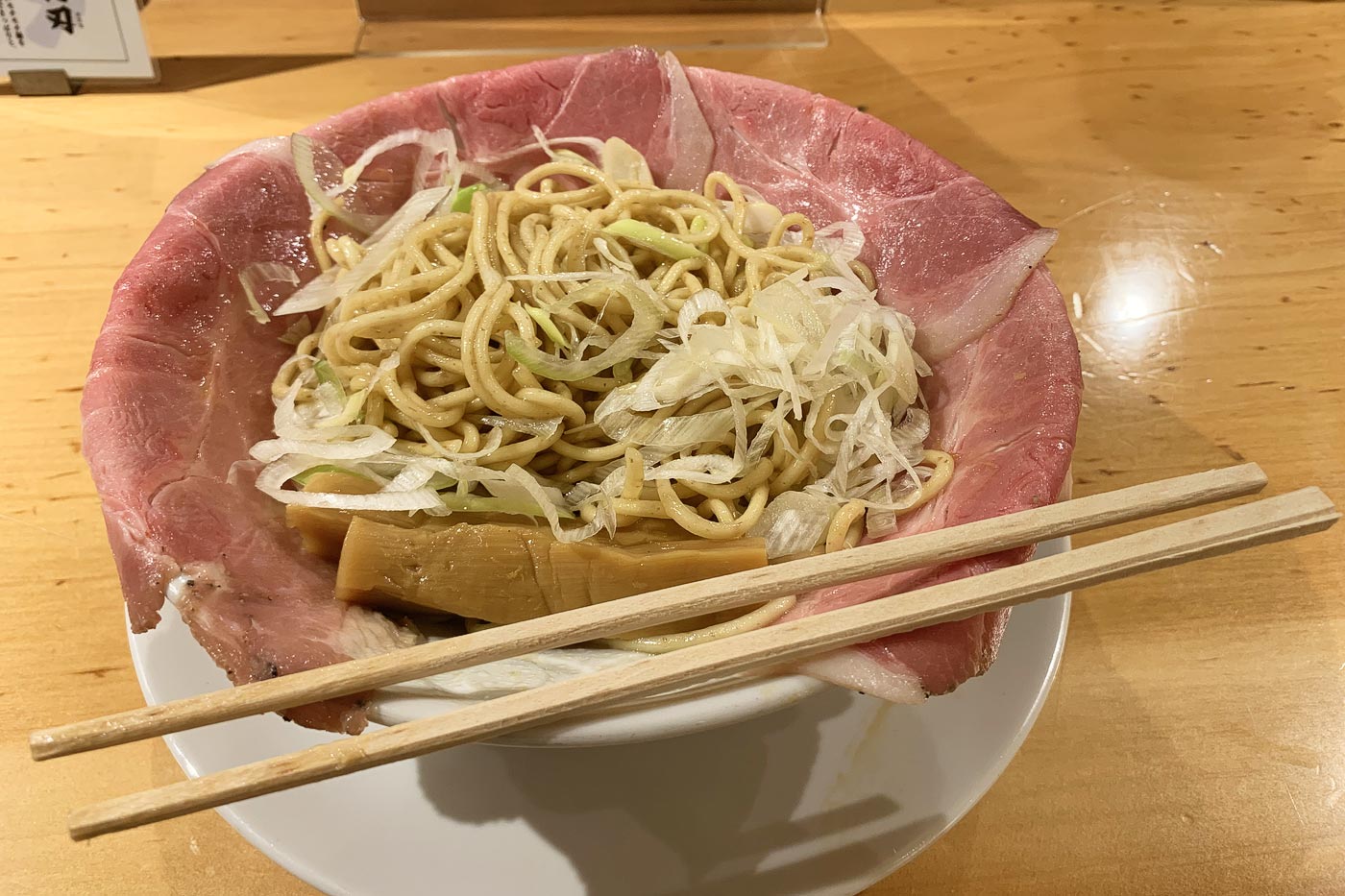
Ramen is said to have originated in China, but soba noodles are purely Japanese. These fairly light buckwheat noodles can be served either cold (Zaru Soba), in which case the noodles and broth come separately, or hot (Kake Soba), in a bowl swimming in steaming broth.
The variety of possible toppings and accompaniments is overwhelming, but we assure you that any combination is delicious.
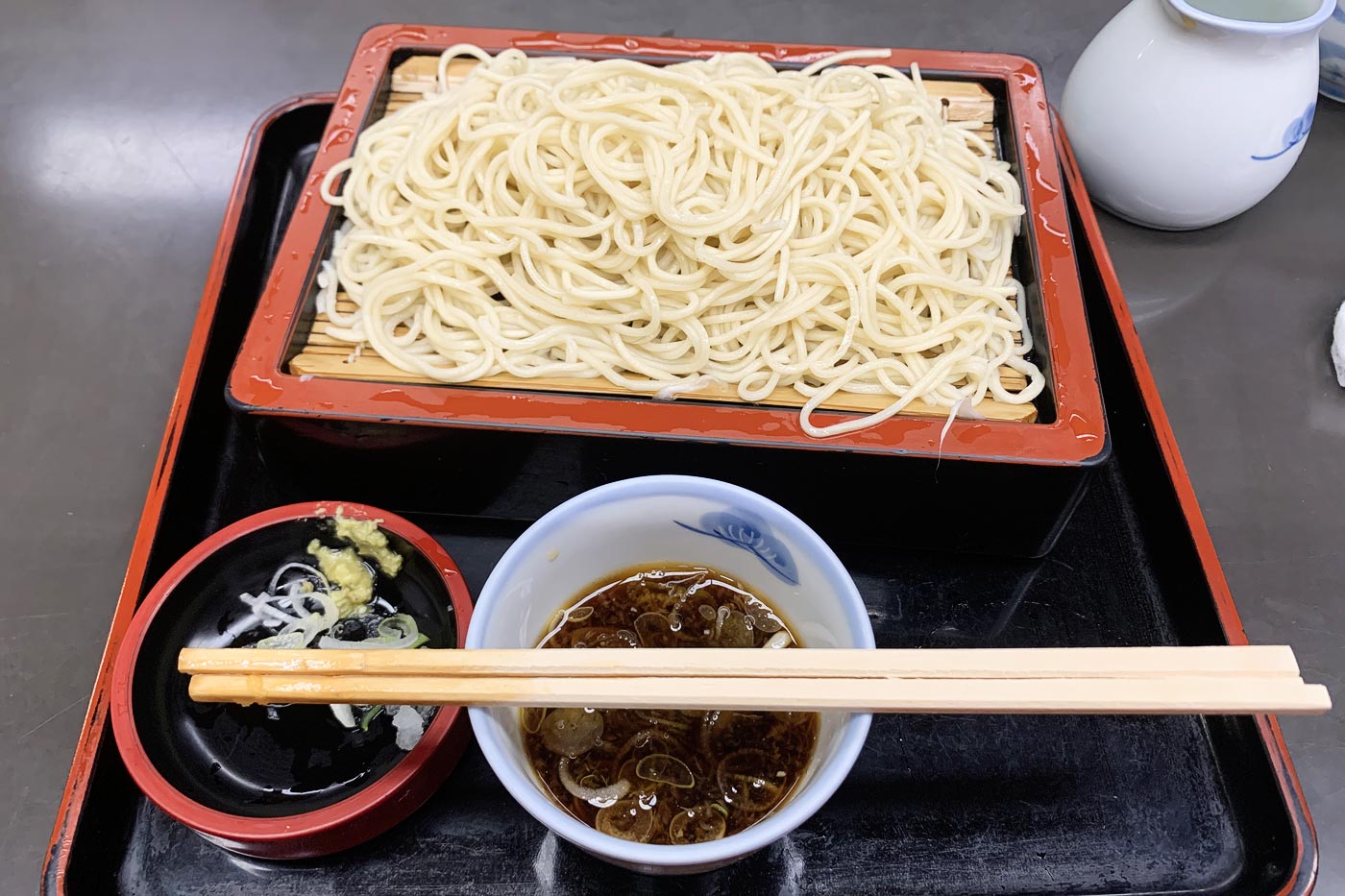
Udon noodles, made from wheat and very thick, are surprisingly soft on the palate. They are served and prepared in a similar way to soba, both cold (Zaru udon) and hot (Kake udon), and the possible accompaniments are also countless.
The broth is usually based on fish, soy and mirin vinegar, but the varieties are almost endless. It is usually served with tempura.
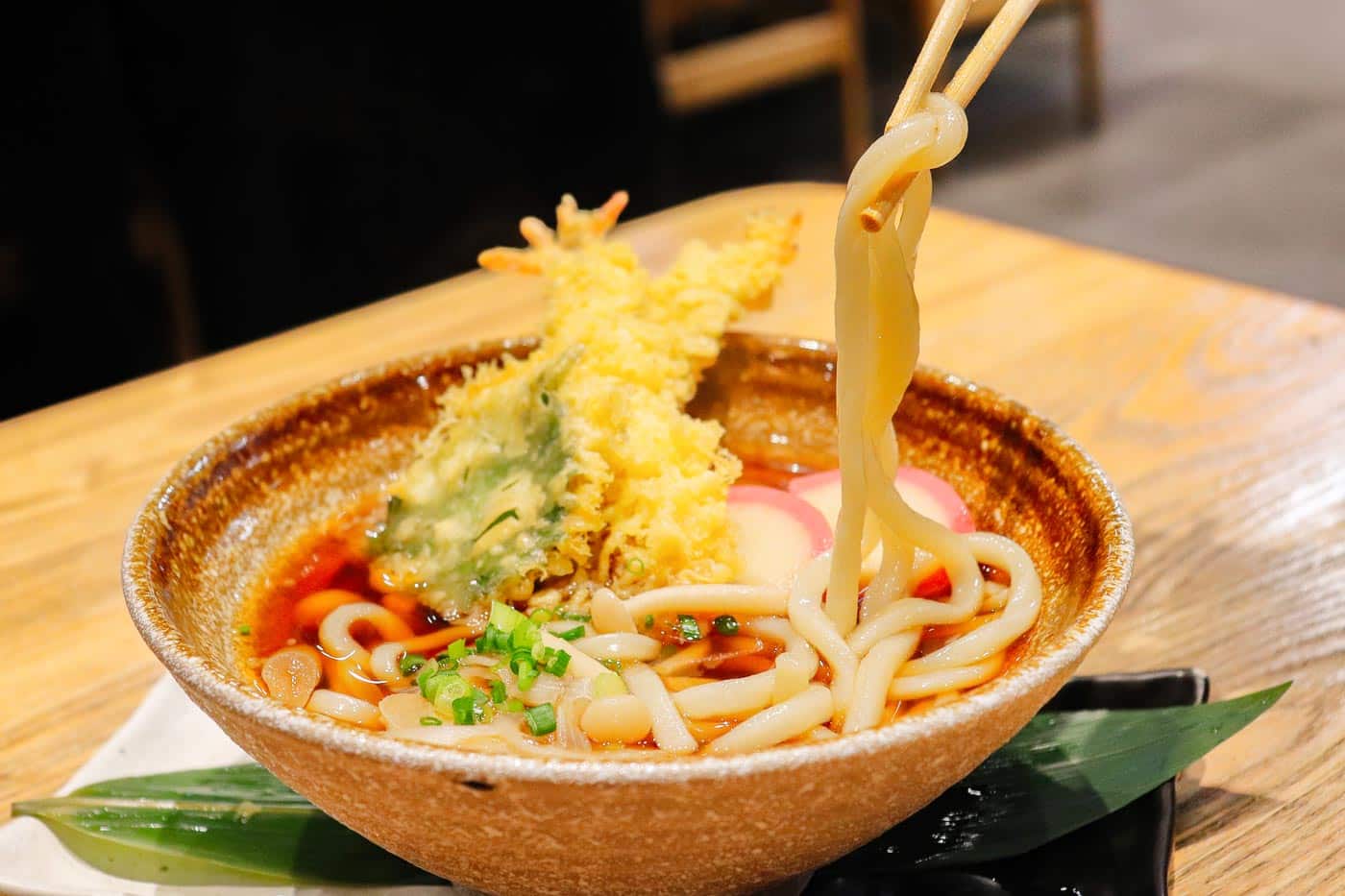
Tempura is another dish that hardly needs an introduction. It is a fried food in which ingredients are coated in batter and dipped in oil at a high temperature.
It is said that the invention is of European origin, from when the Portuguese visited Japan with their galleons back in the 16th century, but since then it has been completely Japaneseized.
Tempura can be made from almost anything: fish, seafood, vegetables, mushrooms, chicken… And when serving, you can take out the pieces individually, or spread several of them over a bowl of rice, or in a bowl of udon or soba.
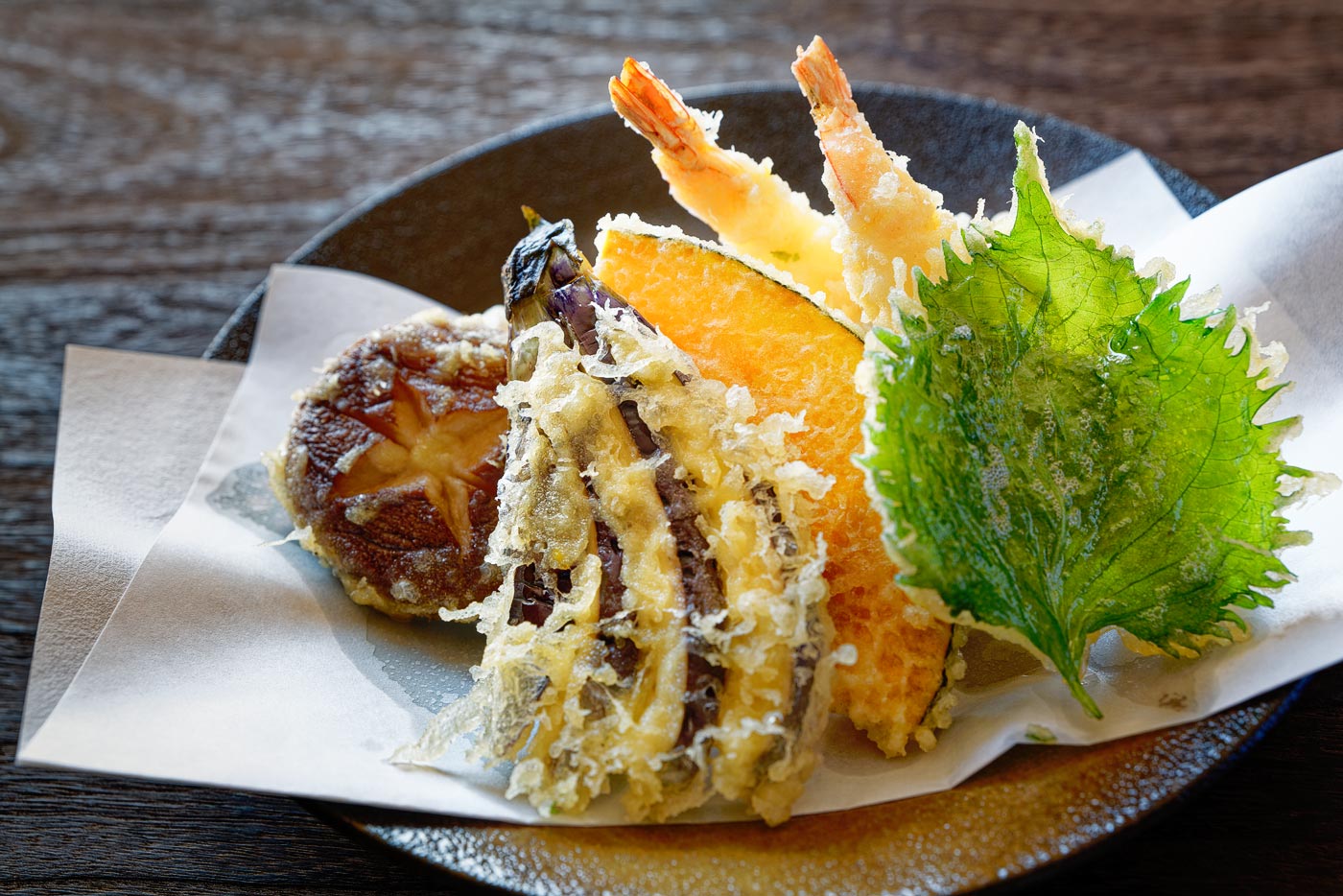
Donburi are bowls of white rice with various toppings and condiments. Rice with stuff, in other words. These toppings can be practically anything: meat, vegetables, raw or cooked fish, tempura…
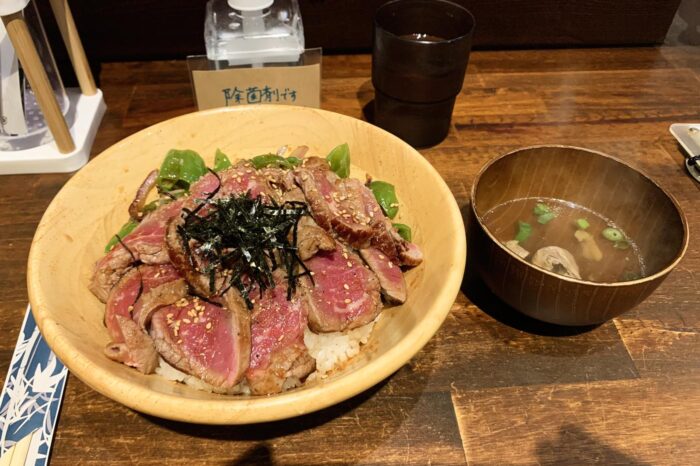
The most common variants are donburi with tempura (called Ten-don), sautéed chicken with egg (Oyako-don), breaded pork (Katsu-don), or beef with vegetables (Gyu-don).
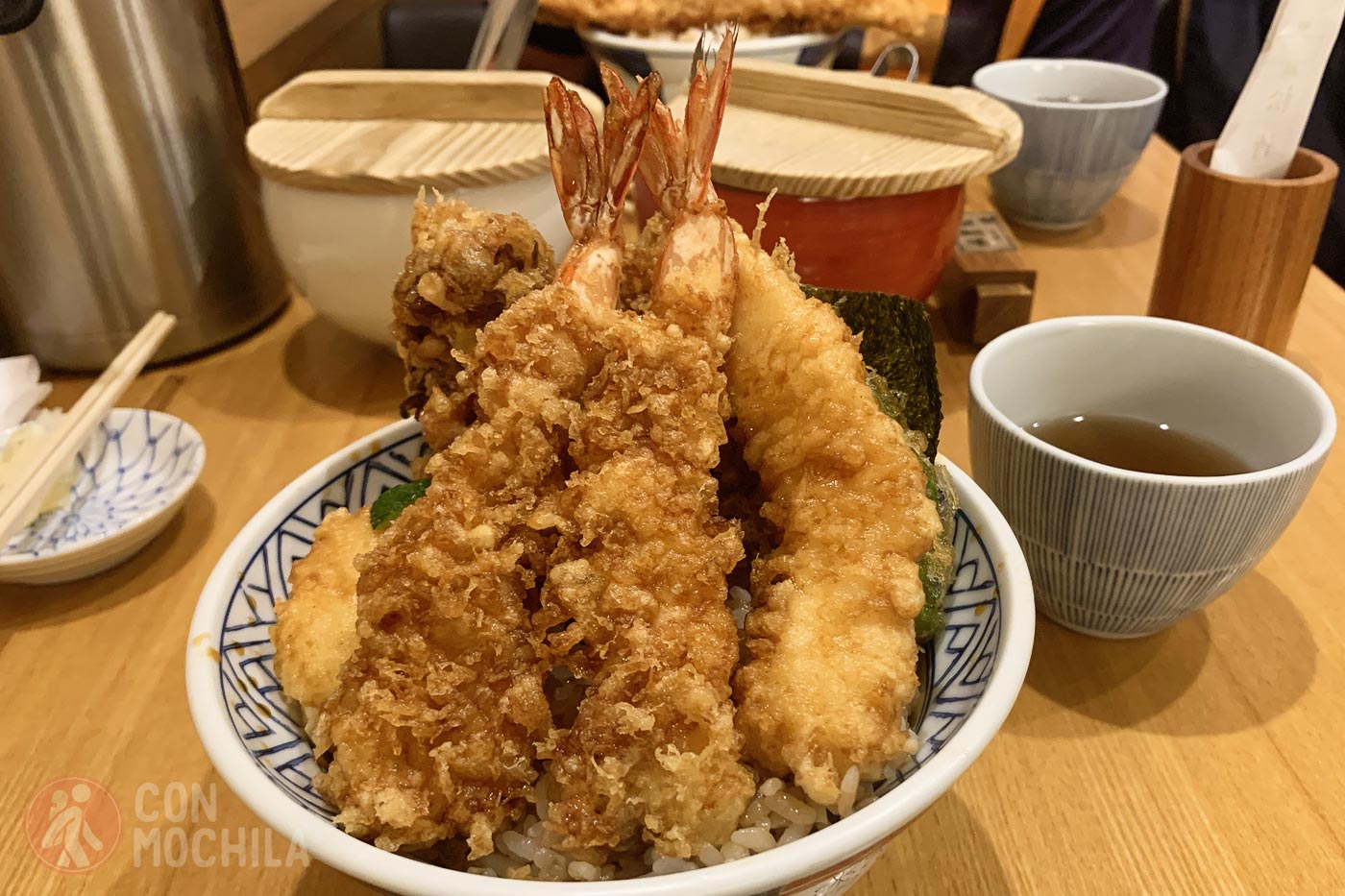
But it is also very common to find sushi Donburis, with infinite possible combinations of fish: tuna, salmon, roe, sea urchin, etc. Donburis are always delicious and fill your stomach in no time. An excellent investment at lunchtime!
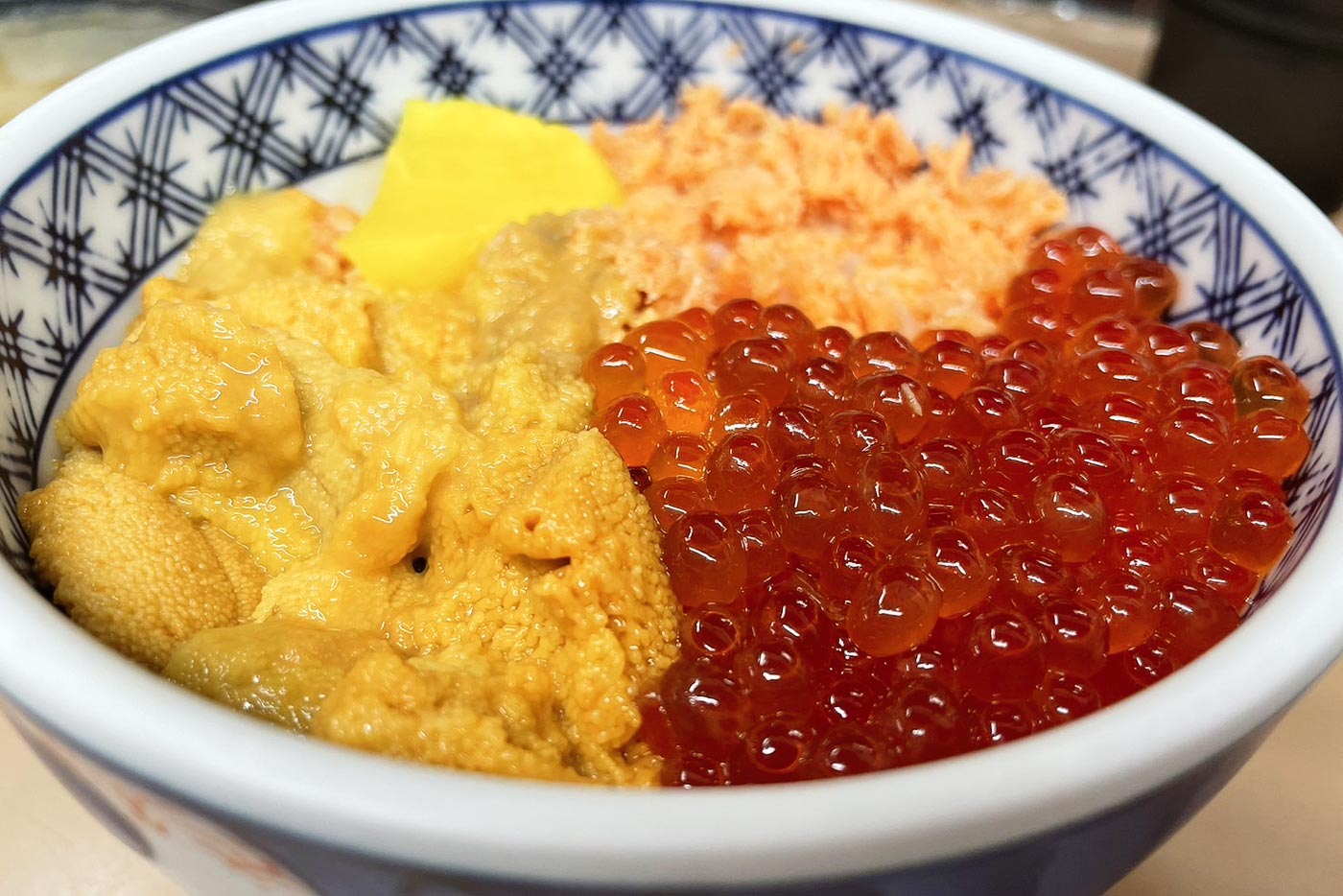
We come to another of the undisputed stars of Japanese cuisine: fish. Don’t be afraid to try it, because here in Japan the product is always incredibly fresh and the way it is prepared is especially scrupulous, which is why it can be eaten raw without any problem. You will feel like you are putting a piece of the sea itself in your mouth.
The variety of fish and seafood consumed in Japan is endless, but they are traditionally served in two different, albeit similar, ways: as sushi or as sashimi.
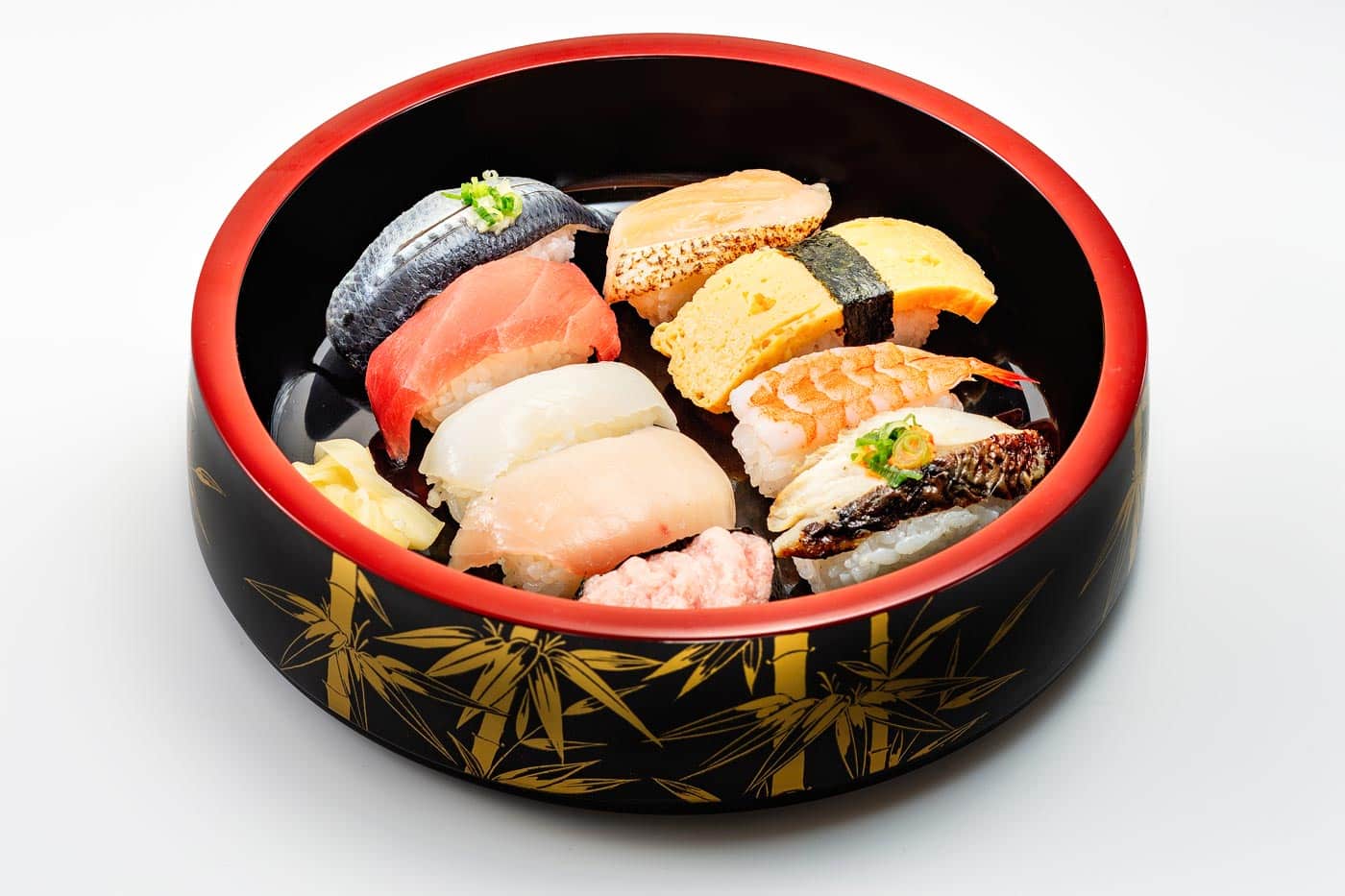
Not all fish are suitable for making sushi or sashimi. They need to be refrigerated, preserved and even cut in a very specific way to avoid food-related risks.
You can eat sushi with confidence; the Japanese have been making it for hundreds of years and, so far, it has not become extinct. They know what they are doing.
Sashimi is fish cuts served raw, without seasoning, to better appreciate the purity of its flavour. The pieces (called neta) are cut to the perfect size and thickness so that you can eat them in one bite.
You can dip them in soy sauce or add a little wasabi (spicy) to enhance the flavor, but nothing more.

Only the freshest and highest quality fish are used to make sashimi, so it is usually the most expensive variant.
Sushi is nothing more than pieces of raw fish (or seafood) placed on small handfuls of white rice. This rice is seasoned with vinegar, salt and sugar, which gives it a special consistency and flavor.
Sushi (also called nigiri-sushi, meaning “sushi to grab”) is meant to be eaten in small bites; each piece (also called neta) is just the right size to pick up with your hand or chopsticks and gobble down in one sitting.
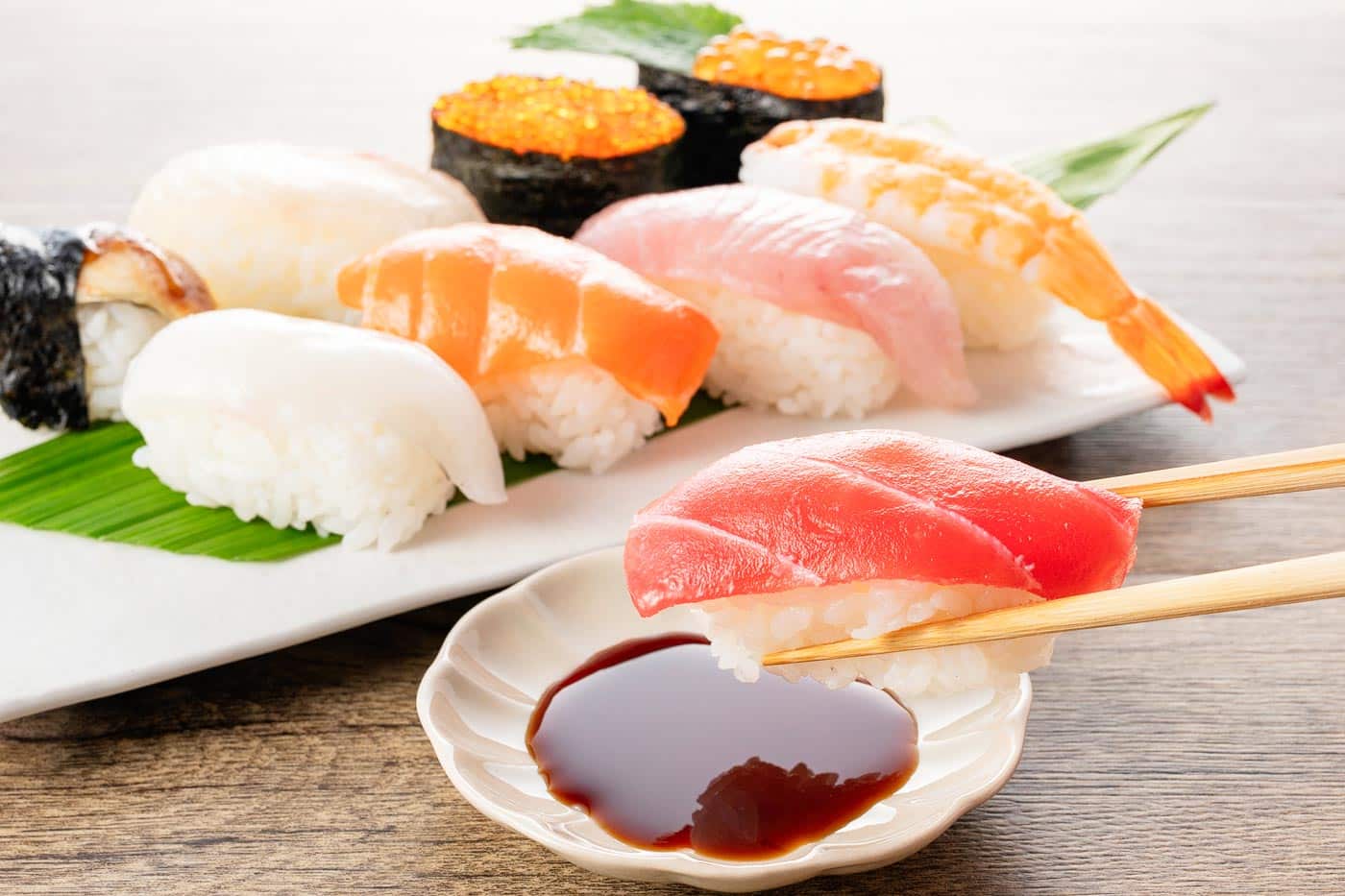
As with sashimi, you can add soy sauce or wasabi (spicy) to season them. You can also find sushi in the form of Maki, that is, a rice roll wrapped in seaweed, with the fish inside.
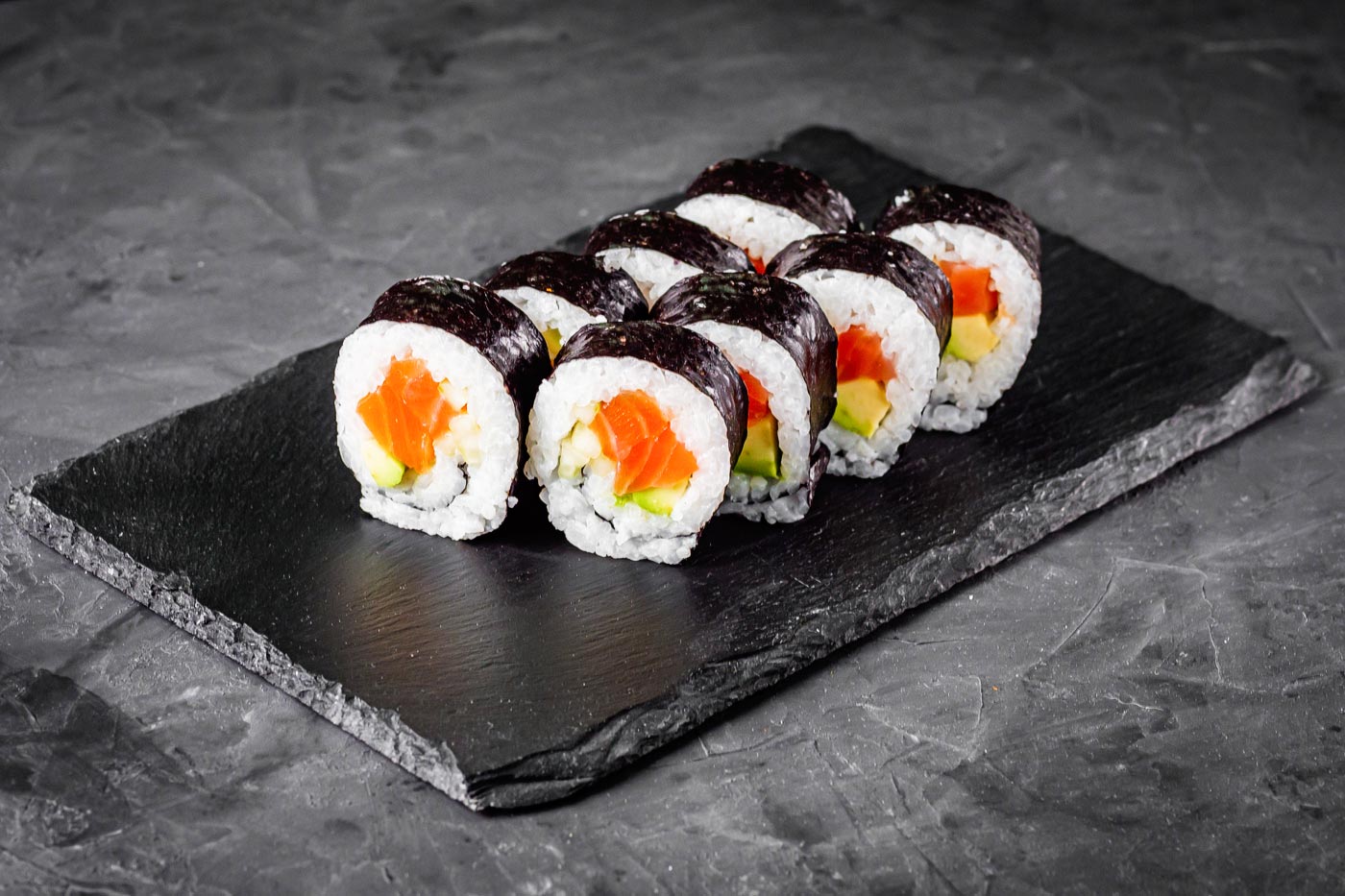
This variation combines sashimi with sushi, and presents (usually in a bowl) several pieces of fish on a bed of white rice, seasoned like that used in sushi.
In fact, Chirashi Sushi means, precisely, “sushi spread” or “scattered” over rice. In other words, a bowl of rice with sushi, like the Donburis we mentioned above.
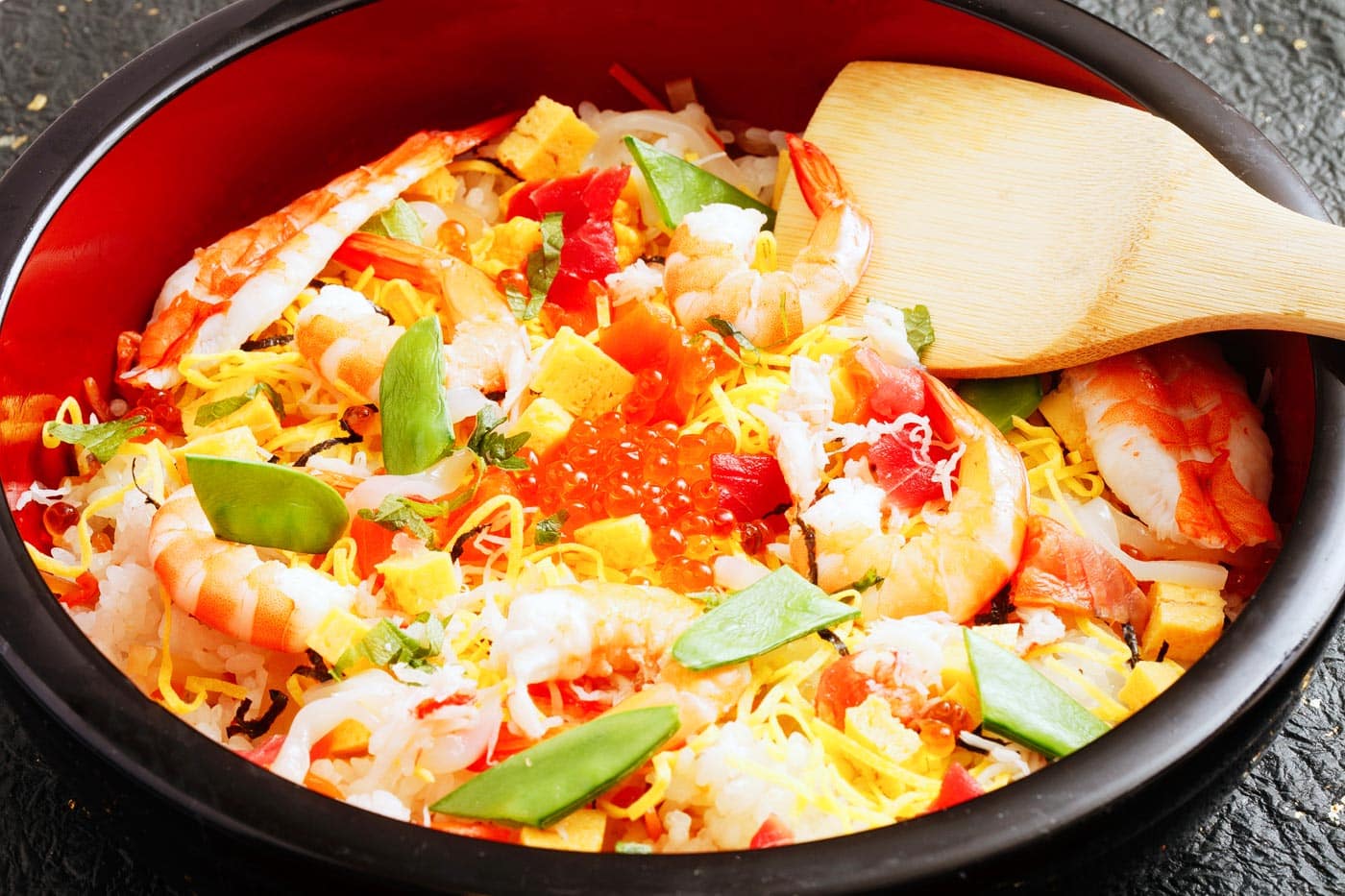
Simply mix the fish with the rice, pour a splash of soy sauce on top, and enjoy the feast.
We have already said that the variety of fish used to make sushi or sashimi is almost infinite. And that is without counting the local specialties, since each region has its own fish, some of which are quite exclusive.
But, to give you a bit of guidance on what you might find, we are going to list some of the most common pieces (really), which you will see in any self-respecting Sushiya (sushi restaurant).
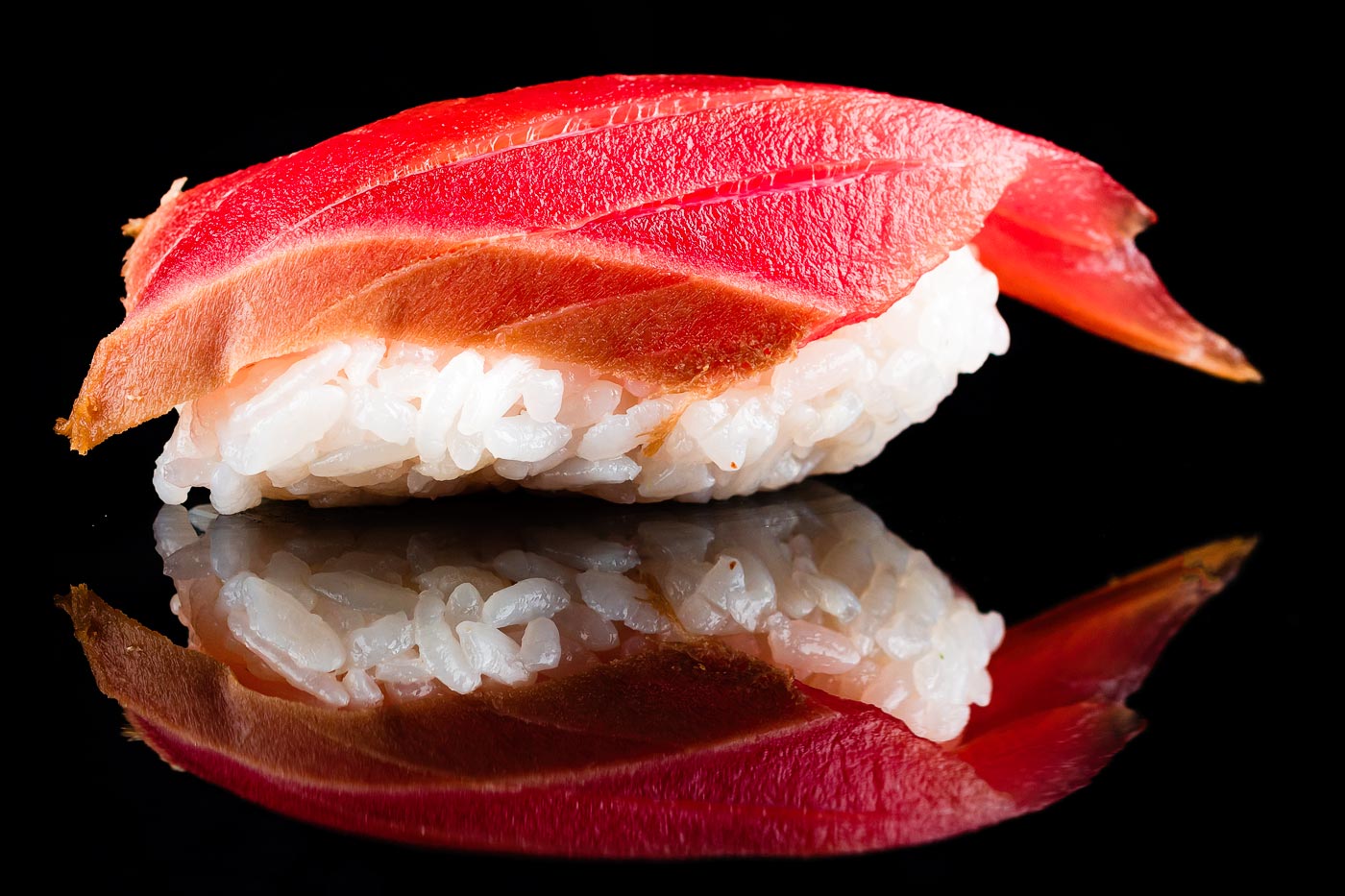
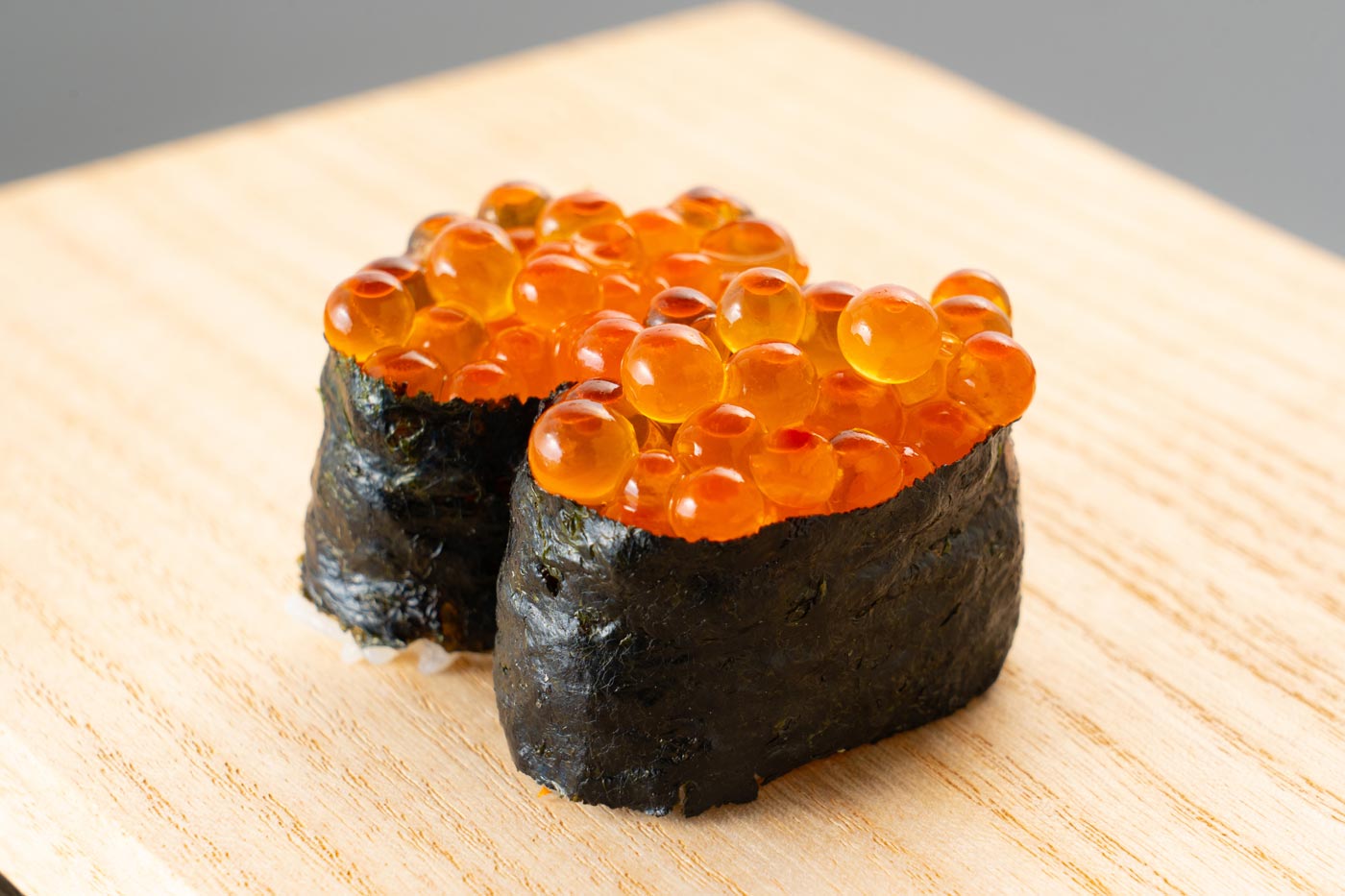
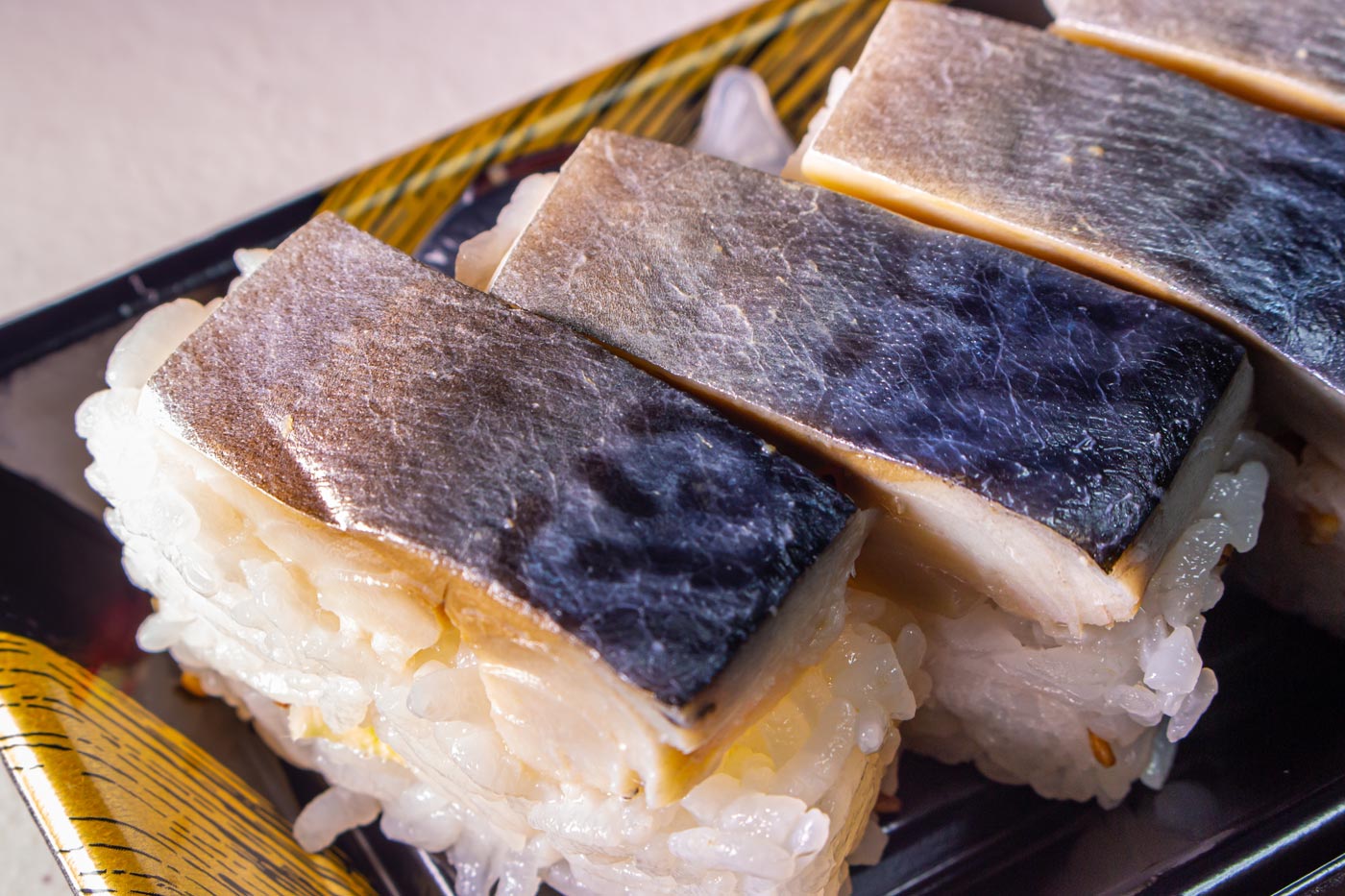
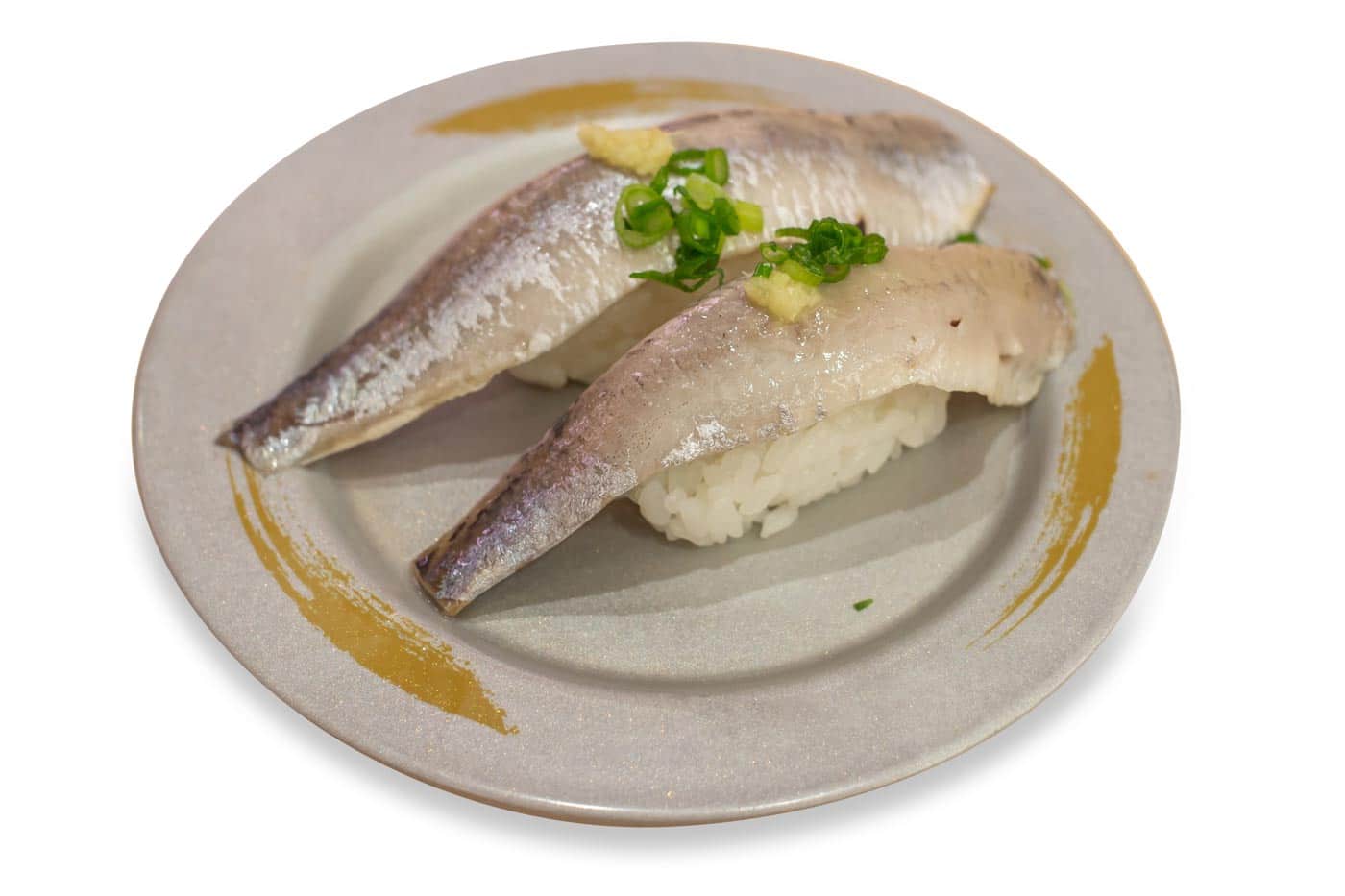
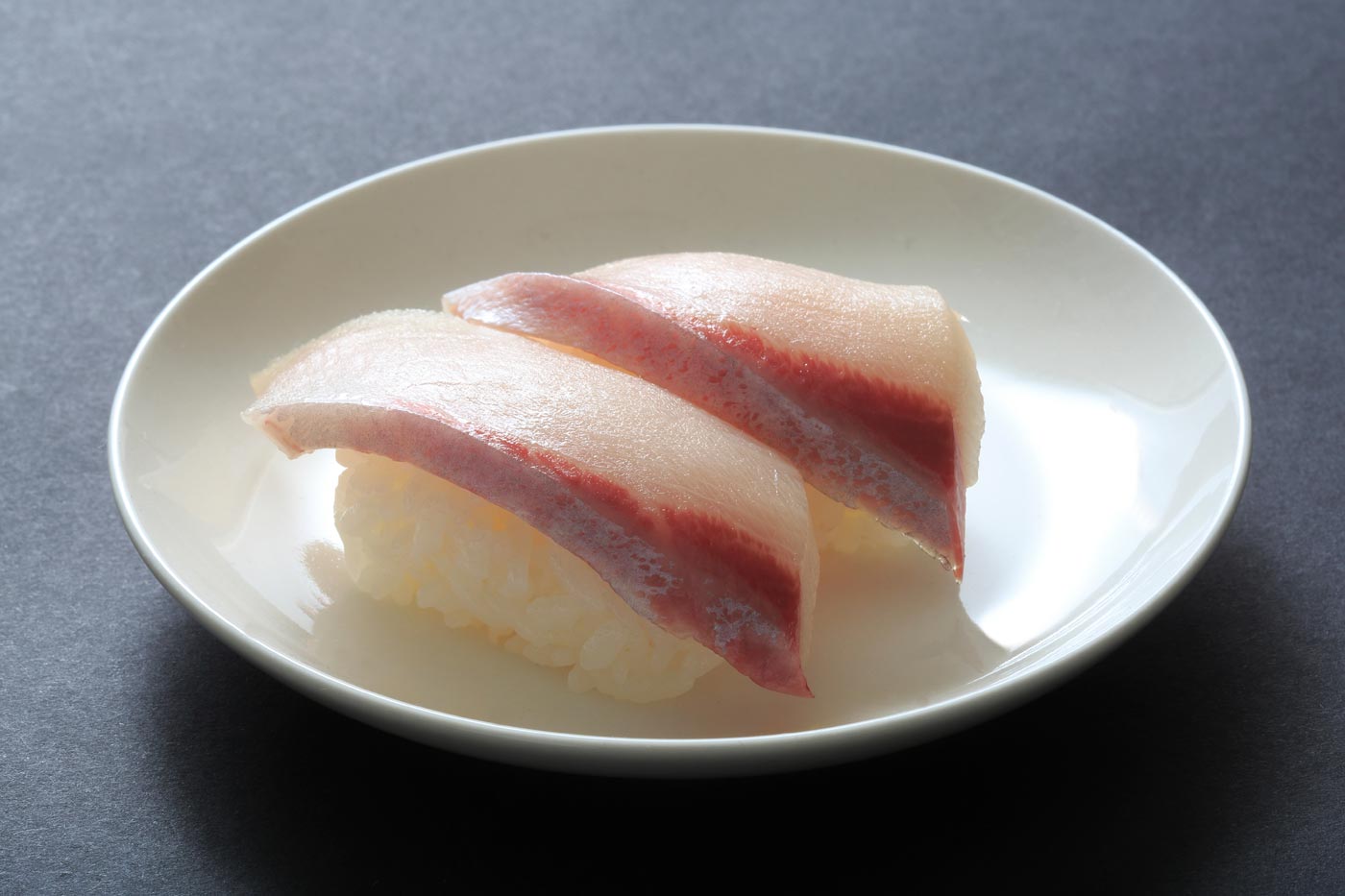


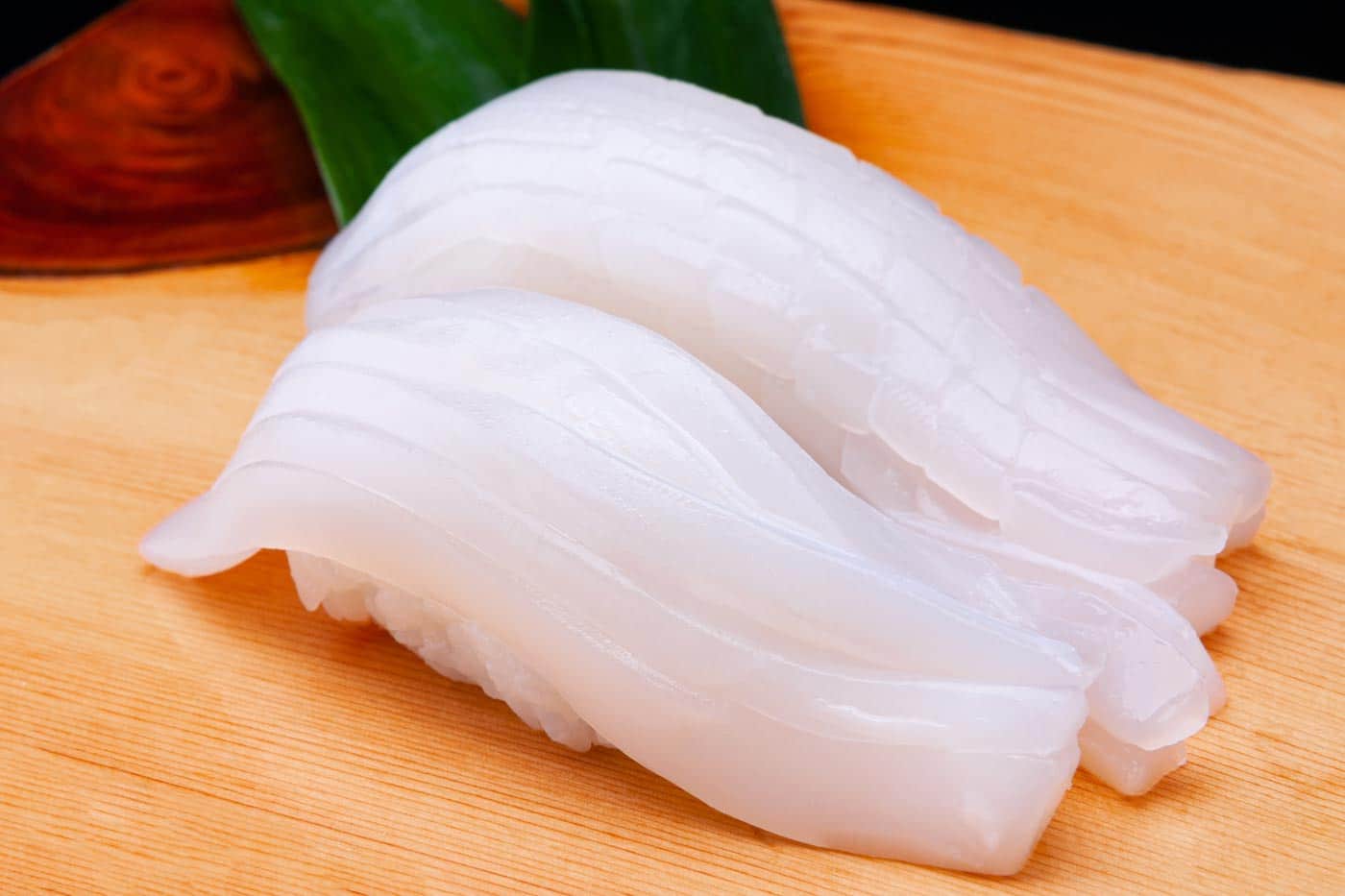
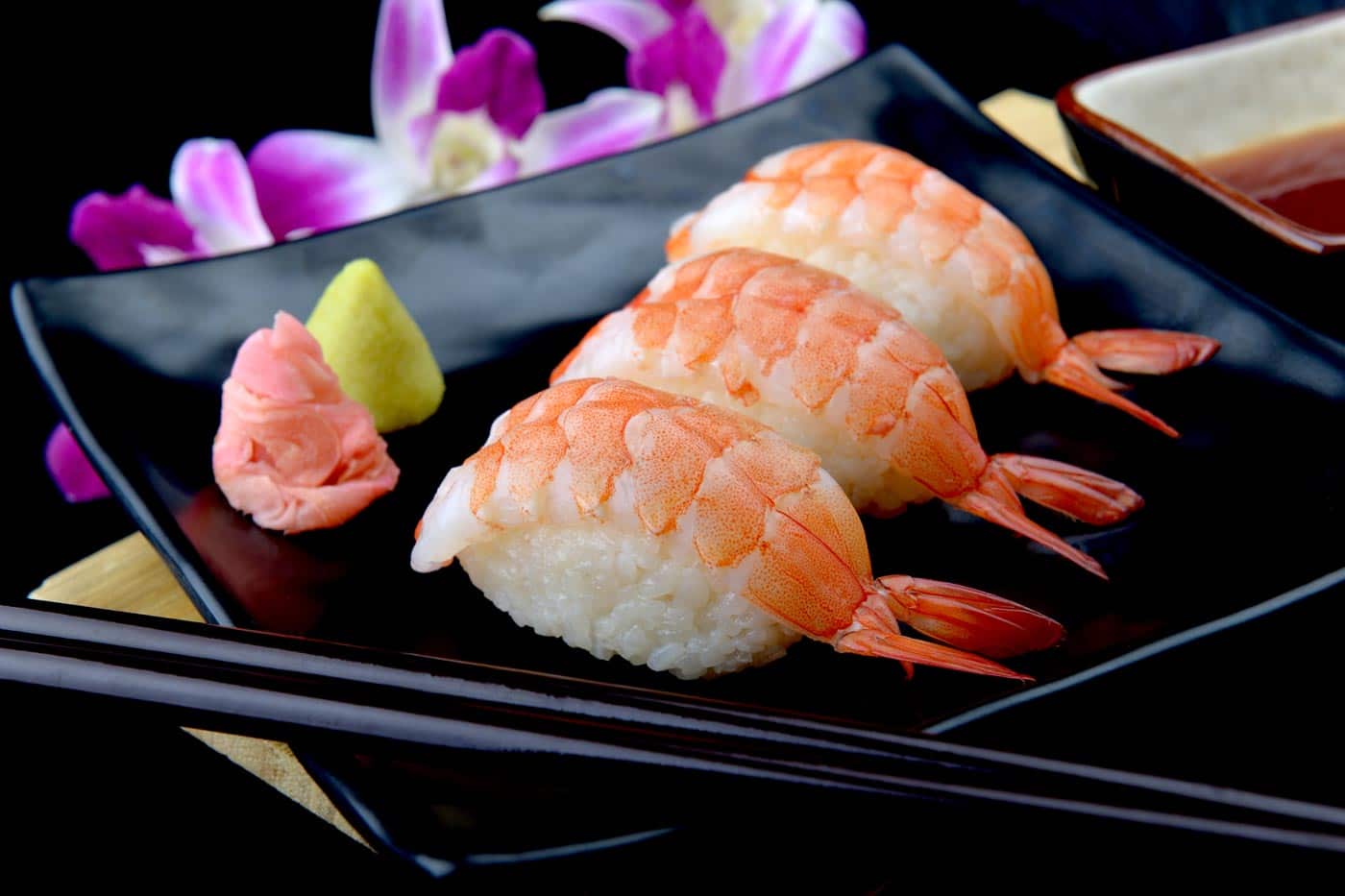
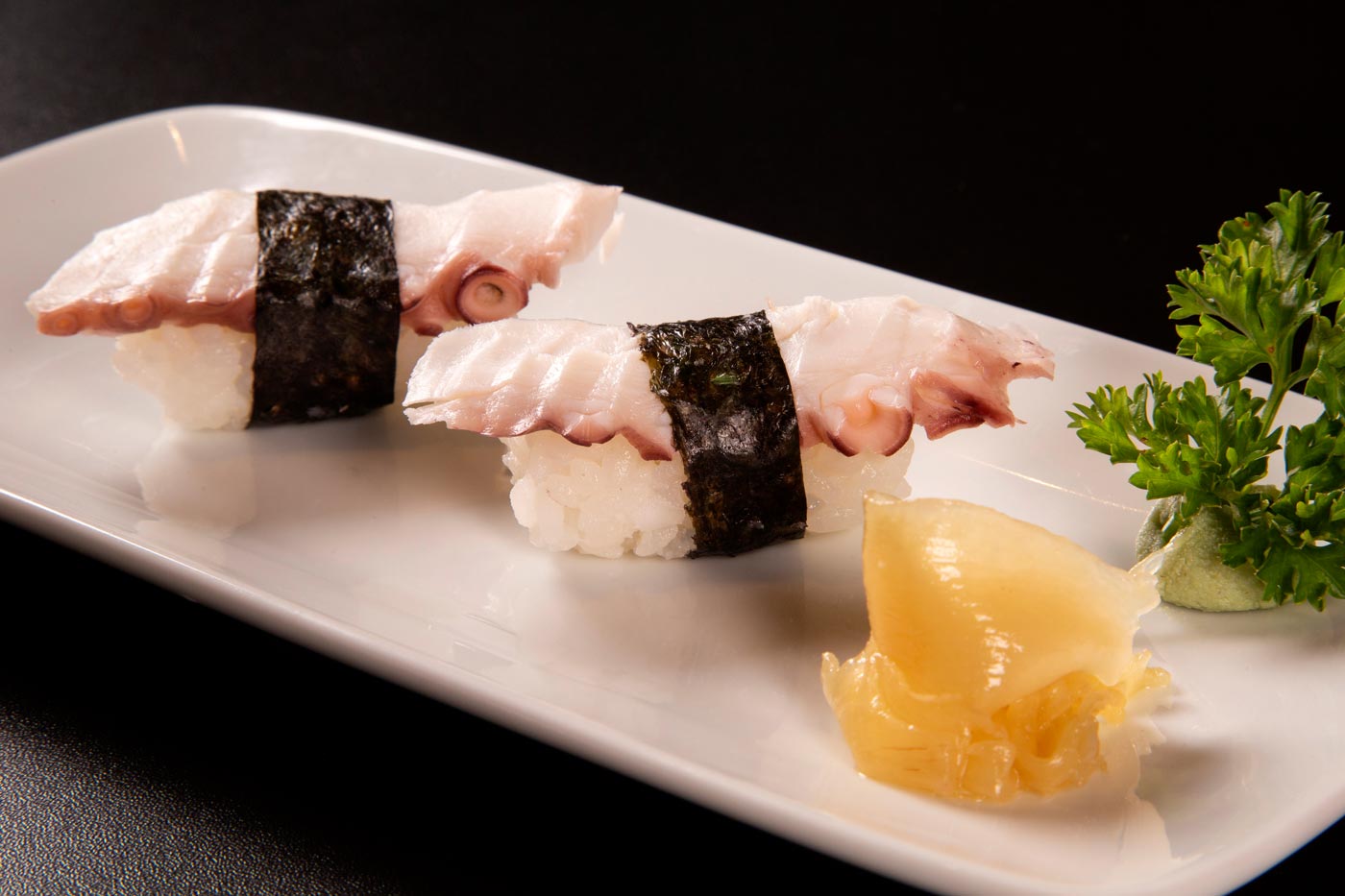
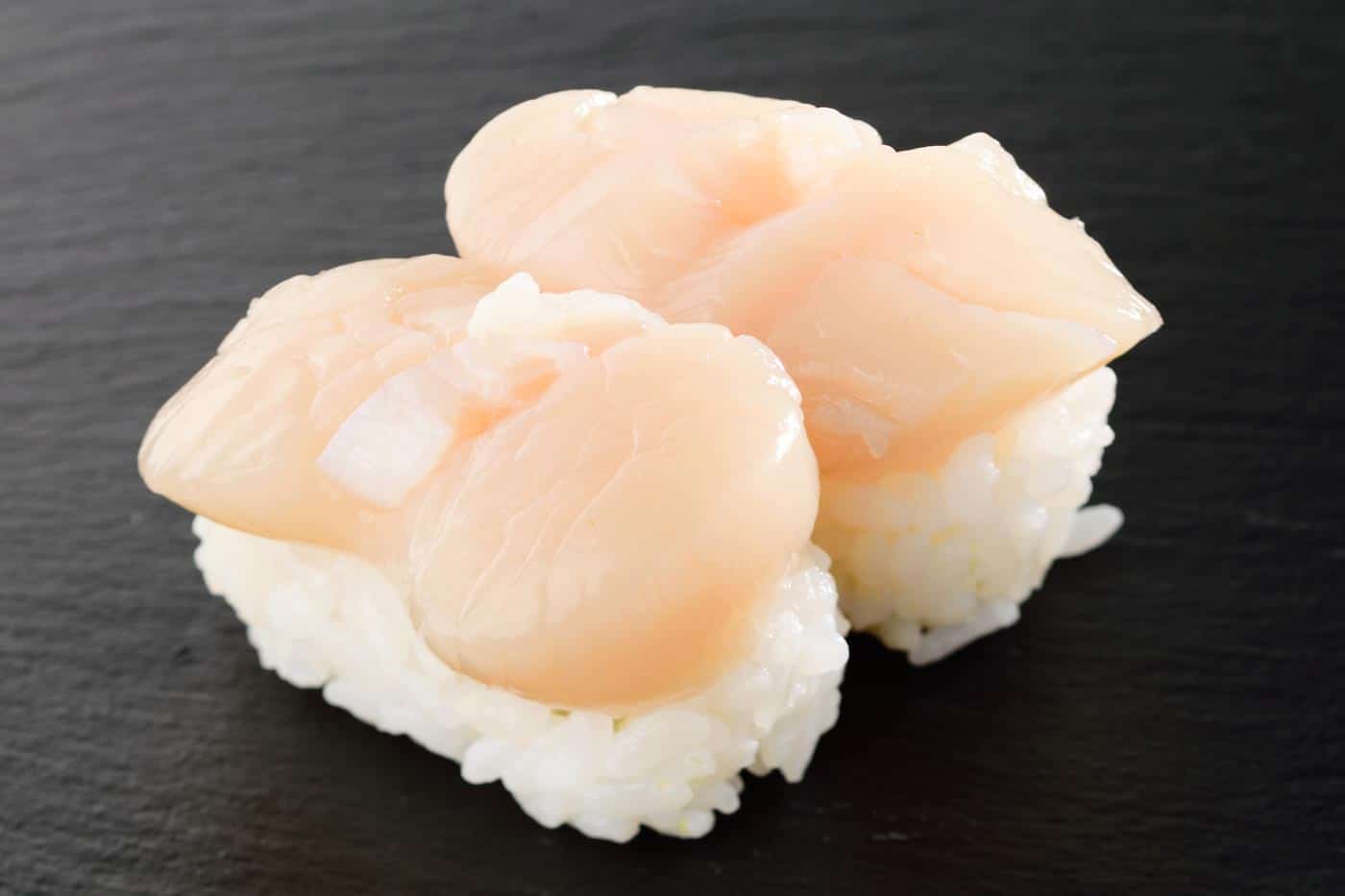
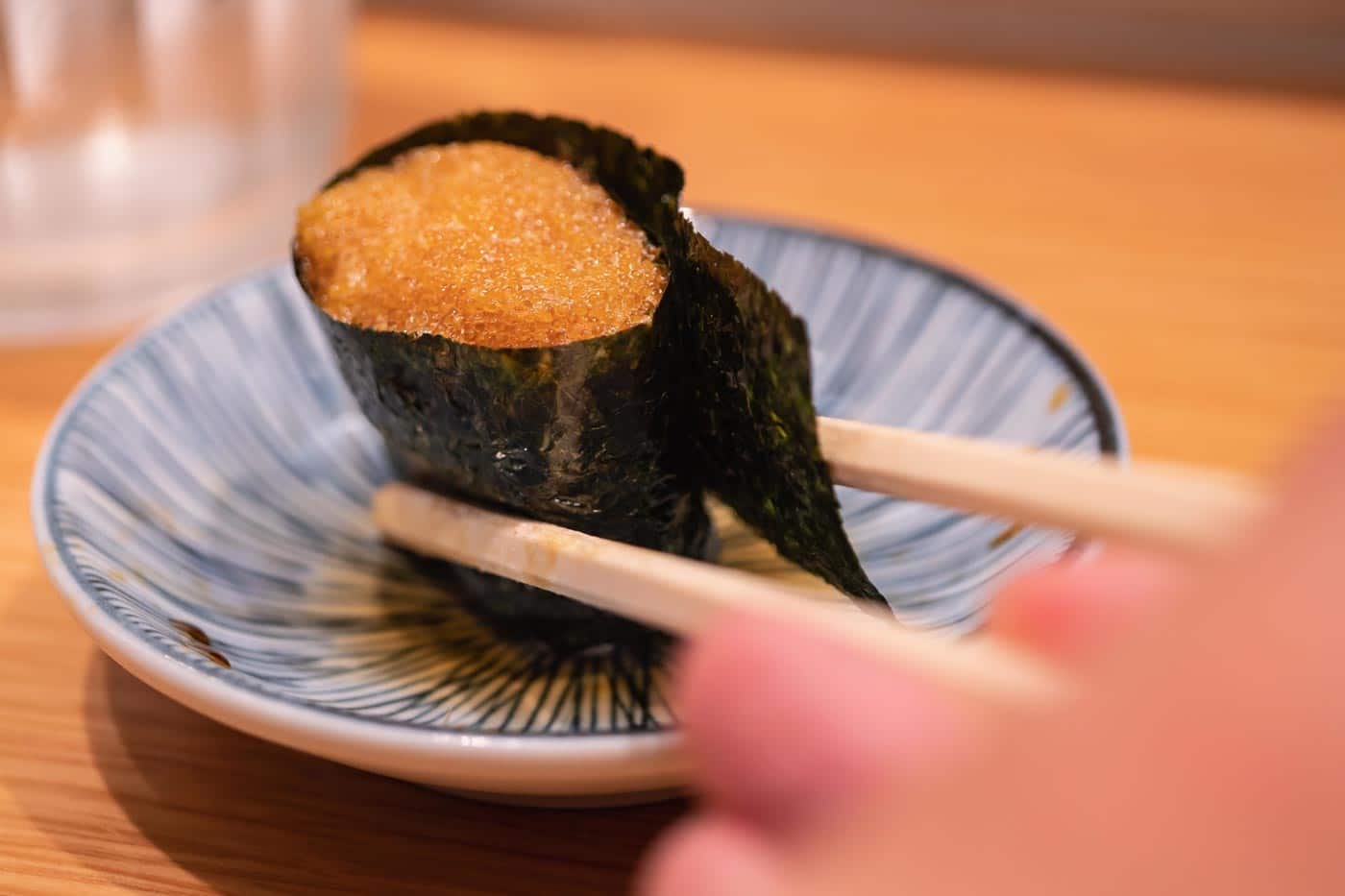
Influenced by neighbouring China, dumplings and empanadas of all kinds are very popular in Japan. But the Japanese also have their own indigenous version of this dish: gyoza (pronounced “guioza”).
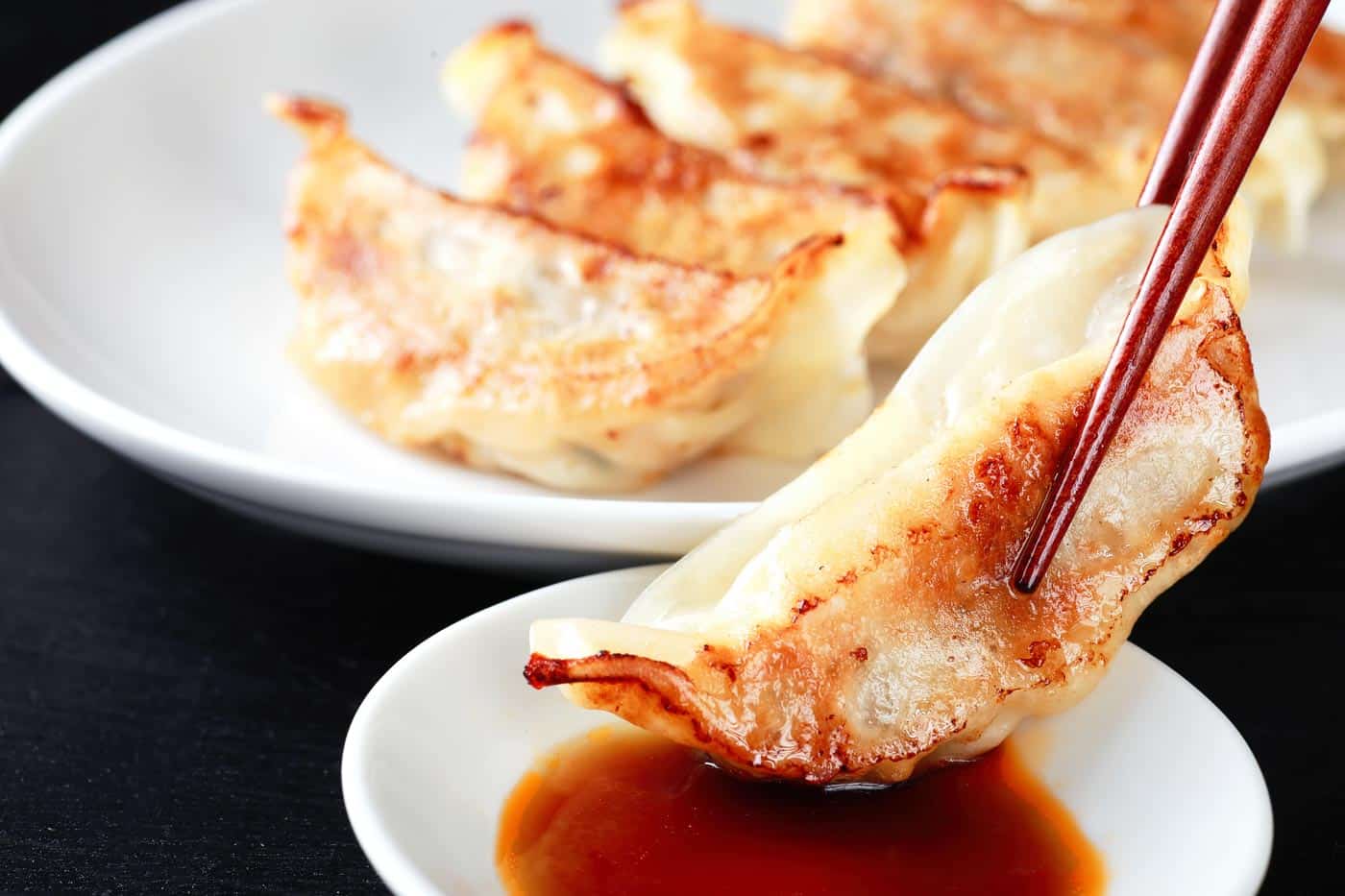
Fried or steamed, gyoza are usually filled with spiced meat and accompanied by various, sometimes very spicy, sauces. They are the perfect accompaniment to a bowl of ramen… or a glass of ice-cold beer.
Although it has little to do with Indian curry, Japanese curry is equally hearty. More like a European stew, the broth is not too spicy, but it is filling enough.
Of a deep brown color, with its chunks of meat and vegetables, it is served accompanied by a copious portion of white rice, and various toppings can be added, generally meats or seafood battered in tempura.
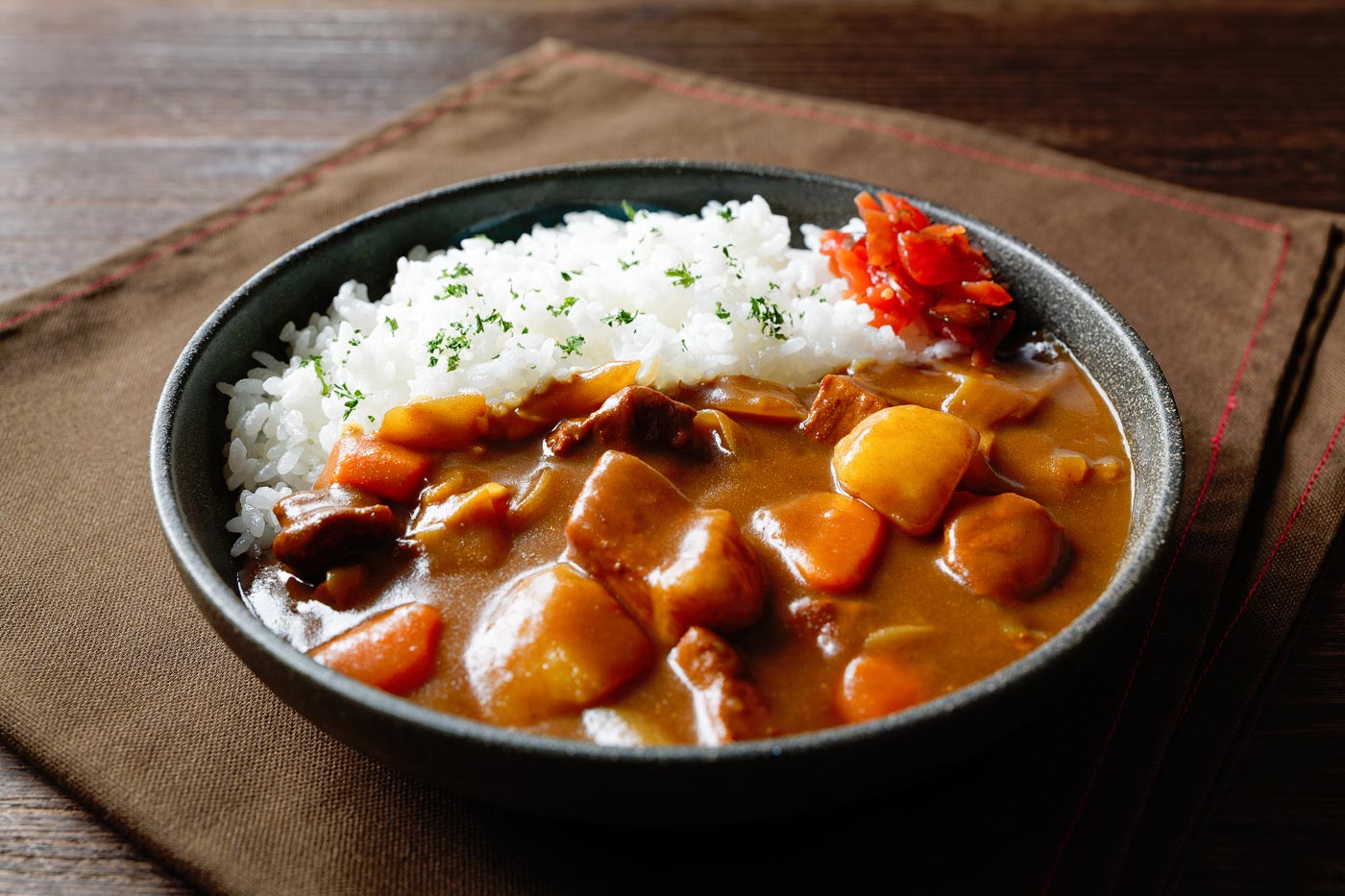
The name of this dish comes from omelette and rice, pronounced in the Japanese way, and it is nothing more than an egg omelette filled with rice. The combination may sound a little strange but, if you think about it, it is not so different from the classic Cuban rice.
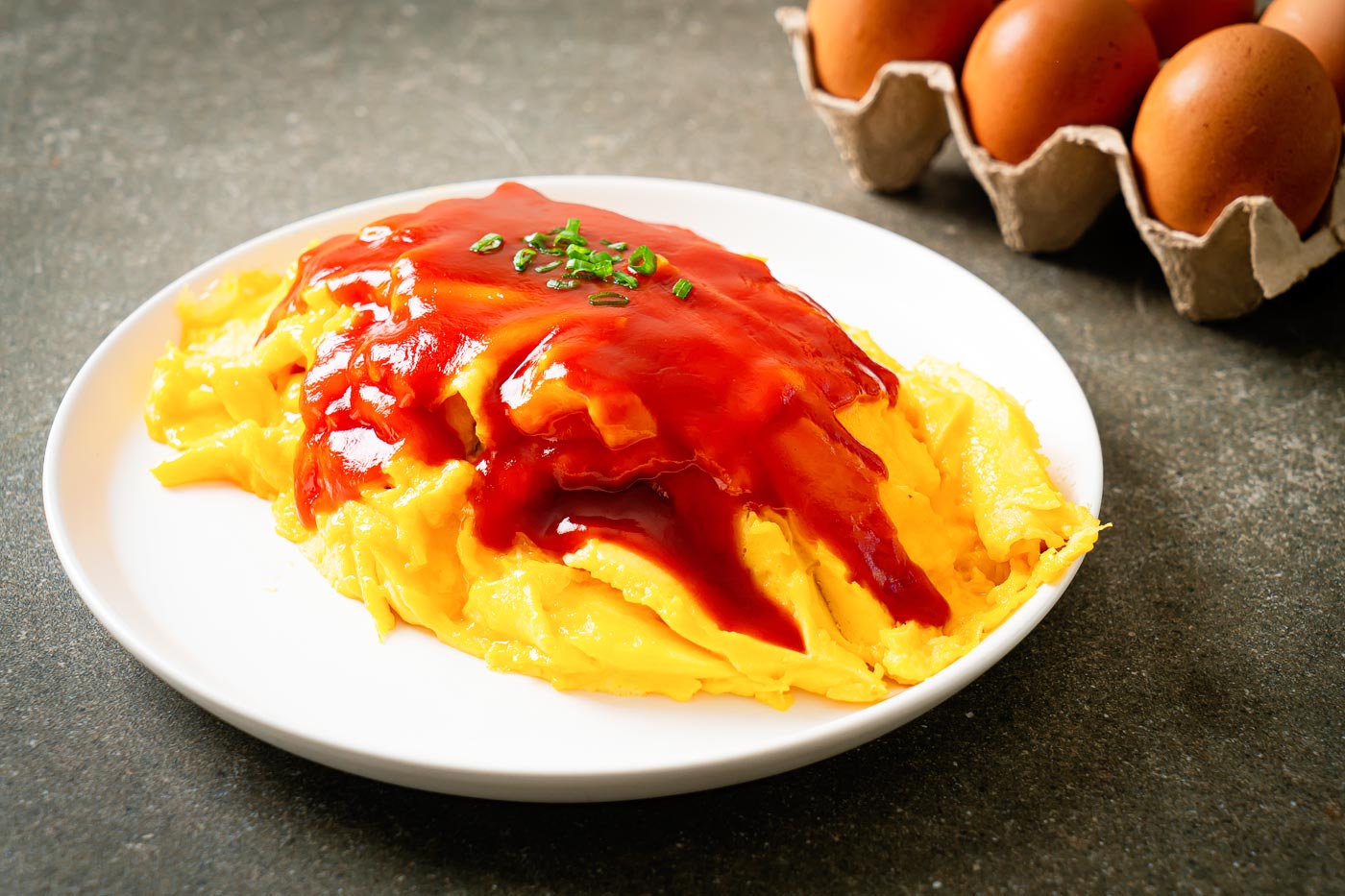
Here the rice is dipped in ketchup to make it extra tasty, and is often also sautéed with minced meat, mushrooms, or other ingredients to spice things up. Then it is all wrapped up in an egg omelette, usually quite creamy, and topped with a generous splash of ketchup or some other sauce.
Japan is a country without a great tradition of meat-eating. Until a little over a century ago, the Japanese diet barely included meat products. But, due to Western influence, they have gradually introduced meat into their cuisine, and today things have changed radically.
In Japan you will be able to find a lot of dishes that will delight even the most carnivorous.

Wagyu (pronounced “waguiú”) is the general term used to refer to the country’s different varieties of beef. There are various designations of origin, but the best known is probably Kobe.
Who hasn’t heard of the famous cows that are fed beer? Well, that’s Kobe beef (Kobe-gyu), whose high-fat meat literally melts in your mouth.

But in Japan there are also other varieties of beef that are worth trying, such as Matsuzaka (Matsuzaka-gyu; originally from the Mie region, near Kyoto), or Hida (Hida-gyu, from the Gifu region, near Nagoya).
They are all high-quality, fatty meats with a slightly different taste and texture to what we are used to in the West. Be warned: they may not appeal to everyone’s palate… or be affordable for everyone.
Tonkatsu is a breaded pork fillet, which can sometimes be served on a bed of breaded vegetables. It is usually served cut into strips, to make it easier to eat, and can be accompanied by various sauces, some of which are quite strong.
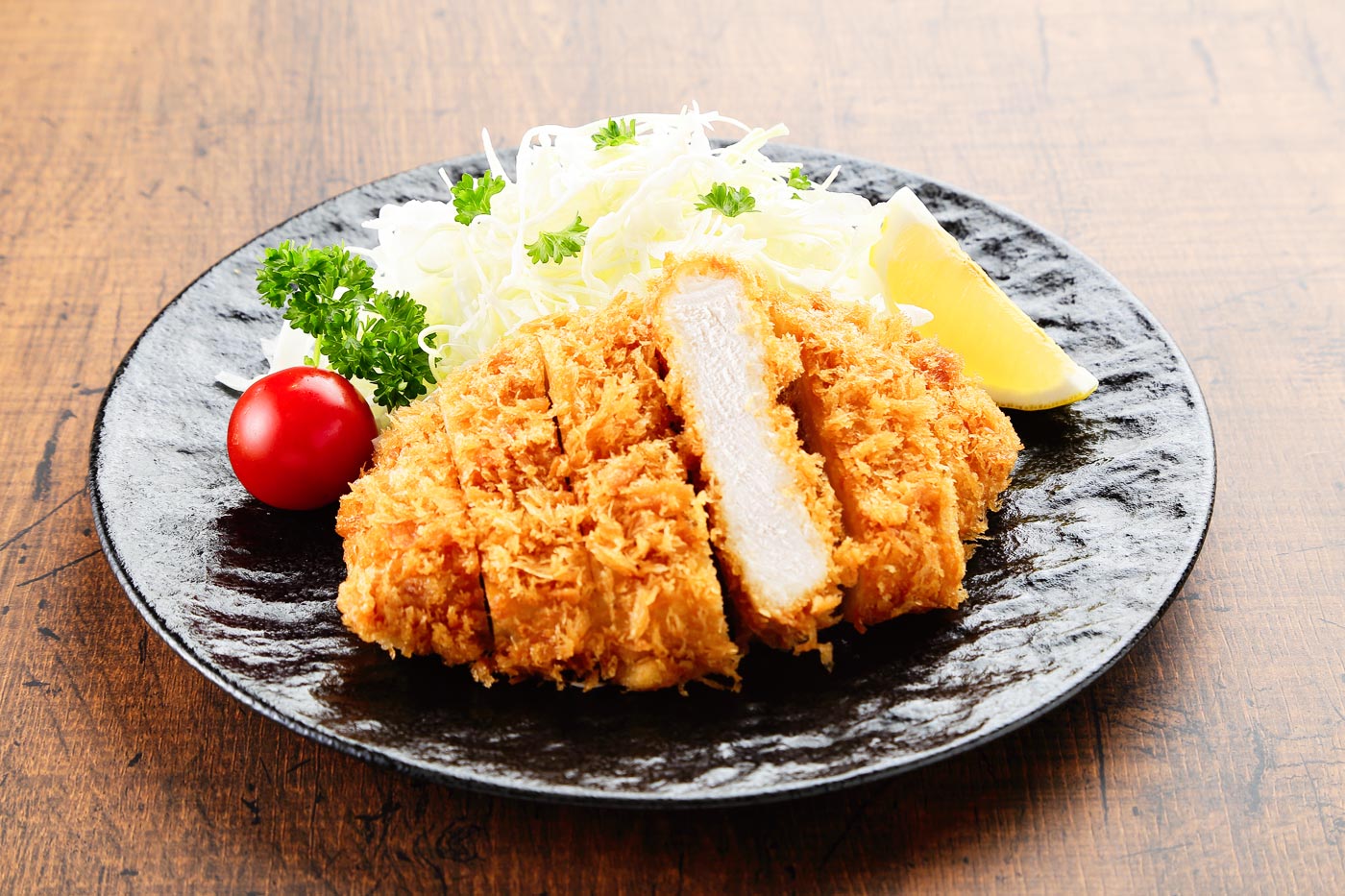
There are several types of tonkatsu, depending on the thickness and type of cut of meat, but you will be more than satisfied with all of them, since it is a very filling dish. It is also commonly served as a topping on a bowl of white rice, in which case it is called Katsu-don.
Kara-age is a hugely popular snack that you can find everywhere, from restaurants serving set menus to street food stalls, bars and taverns. It is a kind of fried chicken balls, coated in various seasonings to give it more flavor.
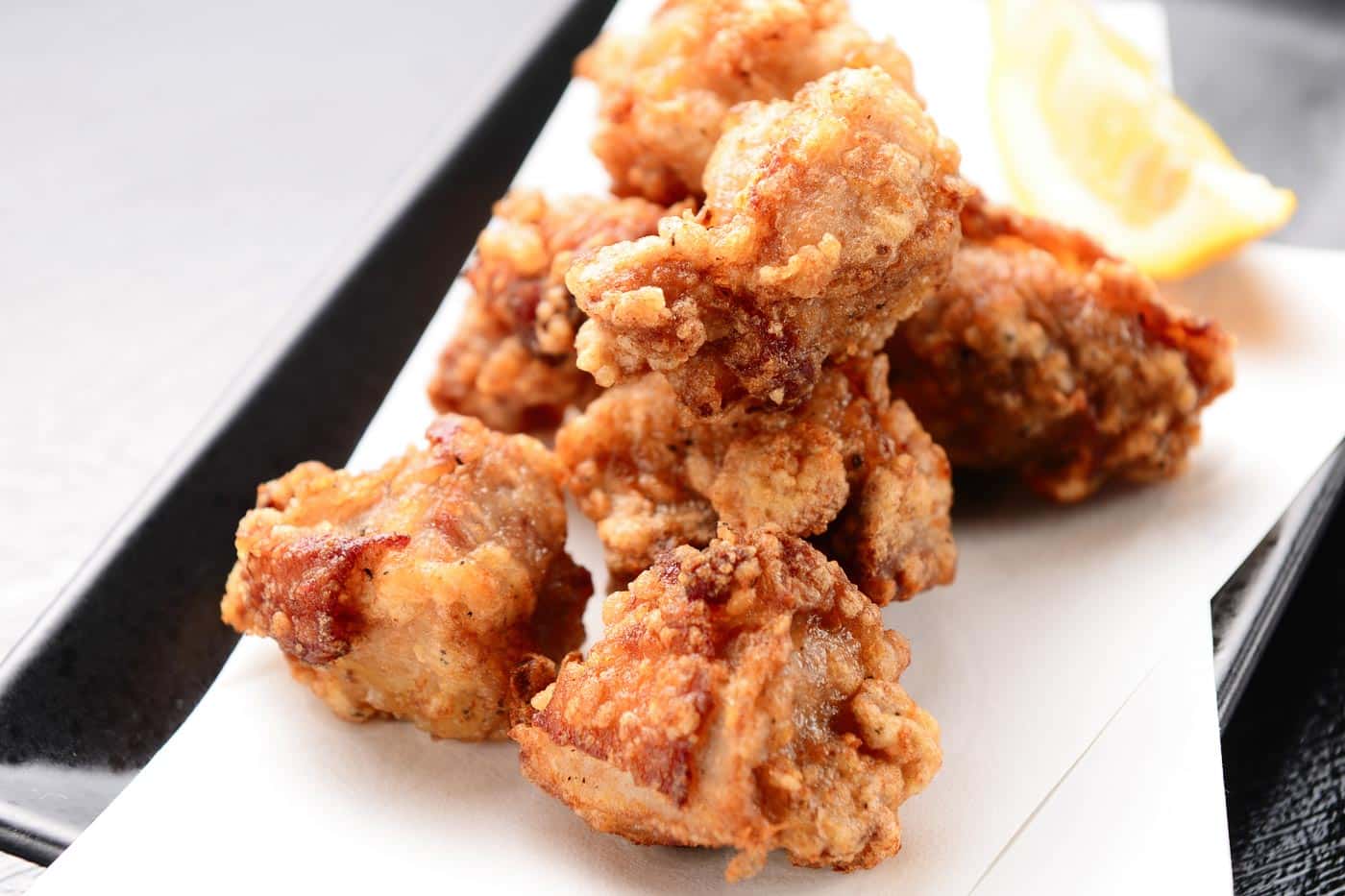
Crispy and tasty, they can be eaten alone or on a skewer, accompanied by rice, or as a topping for other dishes.
Yakitori (literally, “roasted chicken”) is the generic name given to skewered chicken meat, usually prepared over a grill. Similar to the satay of Southeast Asia, there are many possible varieties, depending on the type and cut of meat used.
The most common ones are breast or thigh, but don’t be surprised to find skin, hearts, liver and various offal.
They are usually prepared in two ways: with salt (“Shio”) or with sauce (“Tare”), although each place has its own specialty. These Moorish skewers are the menu par excellence in izakayas (traditional taverns), and they combine wonderfully with a good beer.
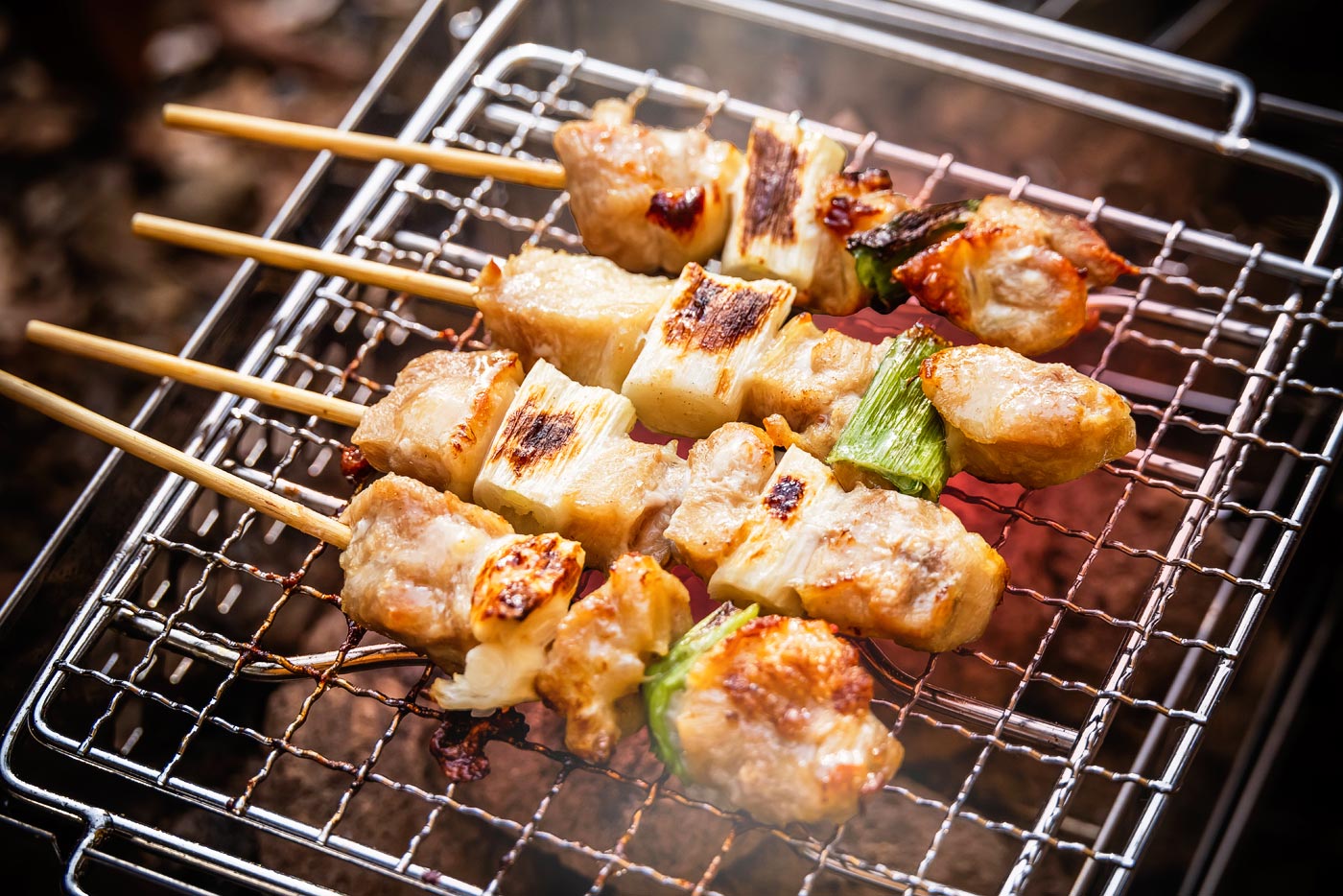
You can also find similar skewers made of other types of meat, such as pork, beef, or even lamb, but chicken is the most common.
Typical of the island of Hokkaido, the northernmost island of the Japanese archipelago (the only place in Japan where lamb is consumed on a more or less regular basis), this dish is a real delight. It consists of grilling pieces of lamb and various vegetables on a small portable grill.
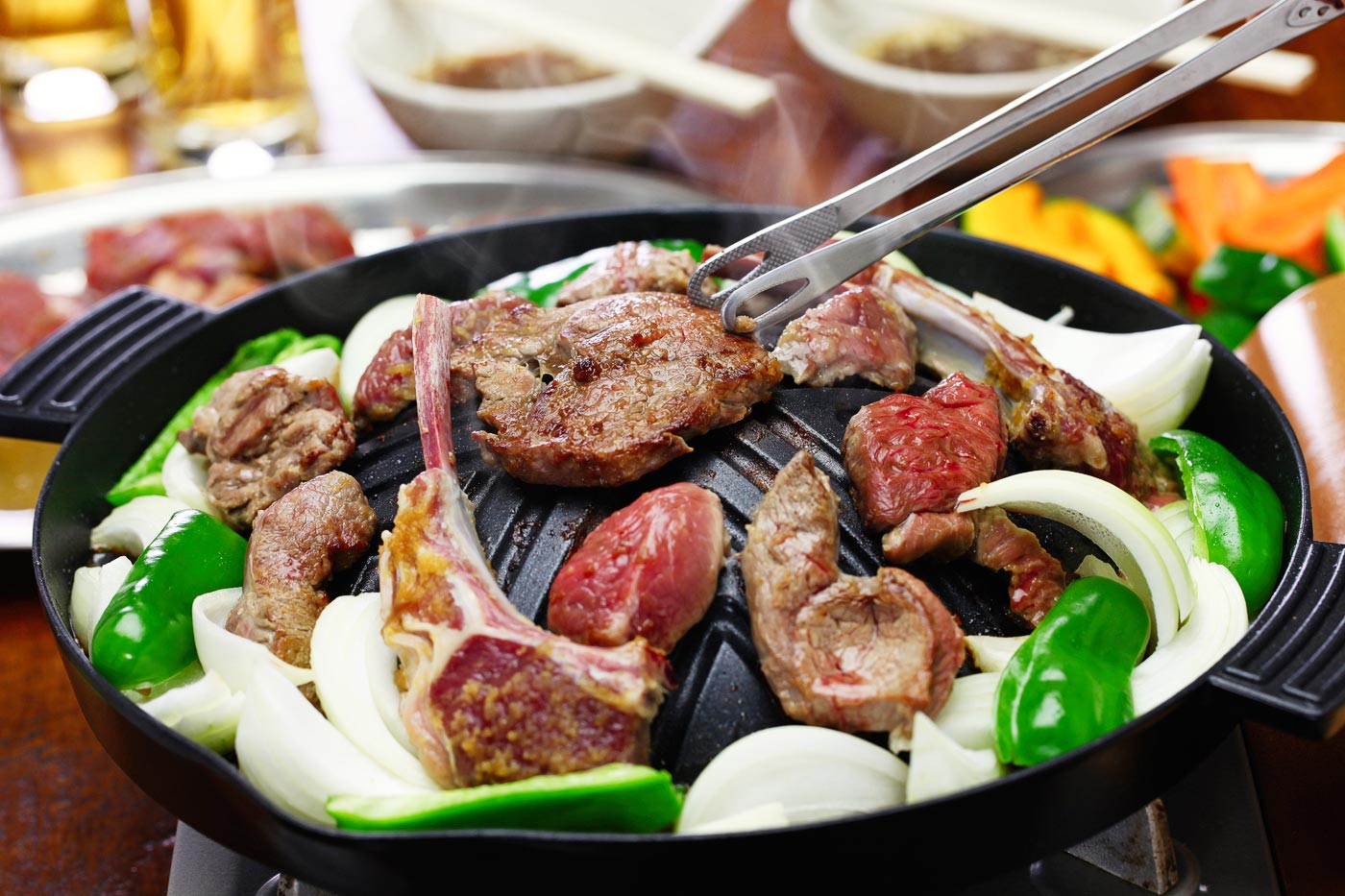
And, indeed, the name comes from Genghis Khan himself… we assume because in Mongolia they eat a lot of lamb.
This isn’t a dish for everyone, but if you like meat, it’s worth a try. Basashi is a kind of horse meat sashimi. The different cuts are served raw, like fish sashimi, and the way to eat them is more or less the same: accompanied by wasabi (spicy) and soy sauce, to better appreciate the purity of the flavour.
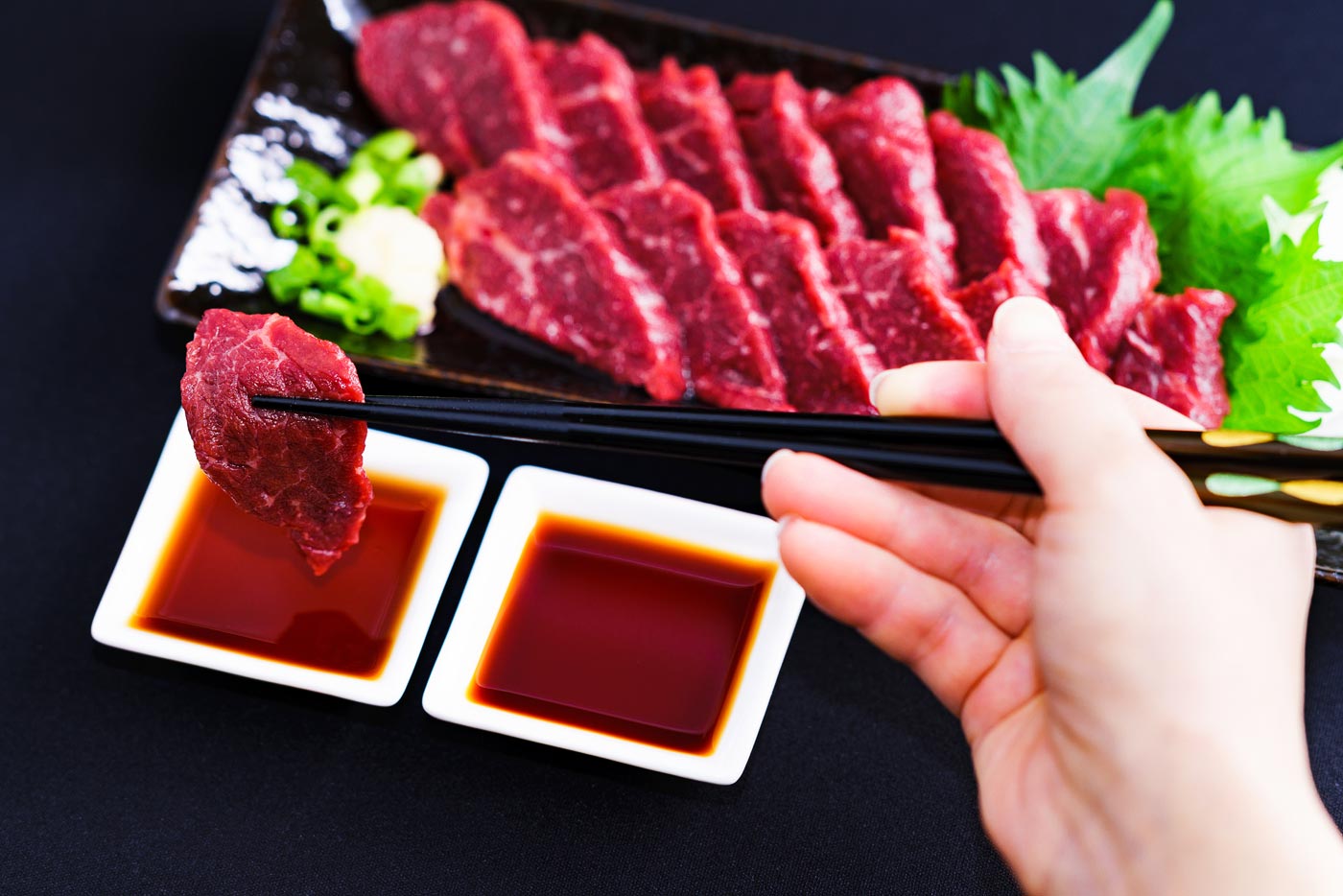
In Japan, there is a long tradition of stew cooking, in which, similar to hot pot in China and Korea, diners gather around a small pot of broth and cook the ingredients in it.
Sukiyaki (usually beef with vegetables and mushrooms) is the most popular variation in Japan, although there are many possible combinations, depending on the ingredients and the type of broth (spicy, creamy, etc.). Shabu-shabu, also quite popular, is another variation on this same concept.
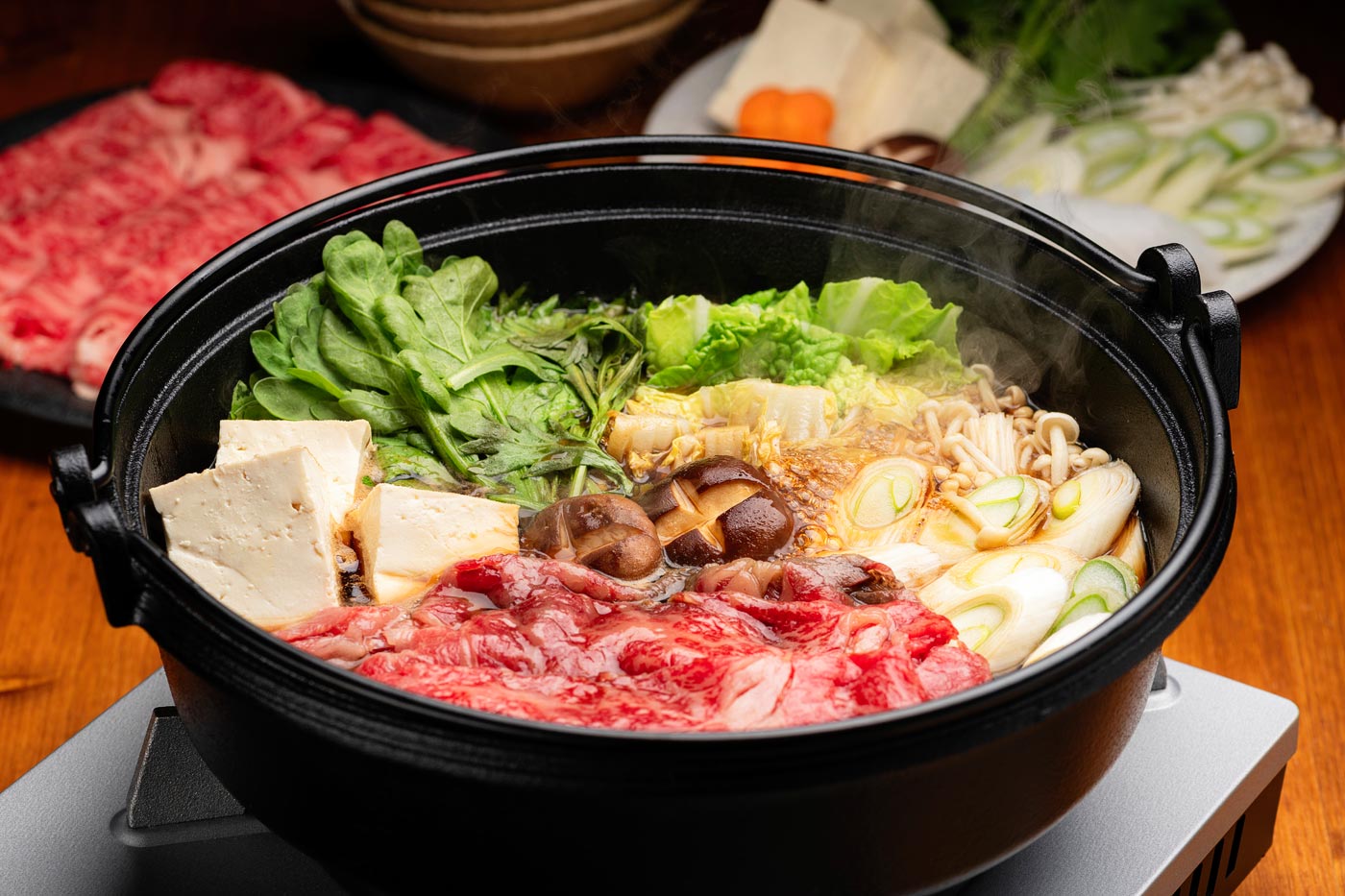
The main thing is that it is a dish to be eaten in a group: you sit down with your friends at the table and, together, you all start to take what is in the pot. That is the fun of it, in sharing like good brothers.
Okonomiyaki is one of the most popular dishes in Japanese cuisine. It is a kind of mini-pizza or pancake, with an infinite number of possible fillings and toppings, which is prepared on a griddle. Or, rather, you prepare it yourself, which is the fun of the invention.

Once it’s ready, top it with a little special sauce, some tuna flakes, and it’s ready to eat. A delight.
This variation of okonomiyaki is typical of Tokyo, and you can find it in neighborhoods with a long historical tradition, such as Asakusa.
It’s basically the same as an okonomiyaki, except that instead of shaping it into a round shape, the mixture is spread out on the griddle and left to brown until it sticks a little (but without letting it burn, of course). Just like the socarrat in paella.
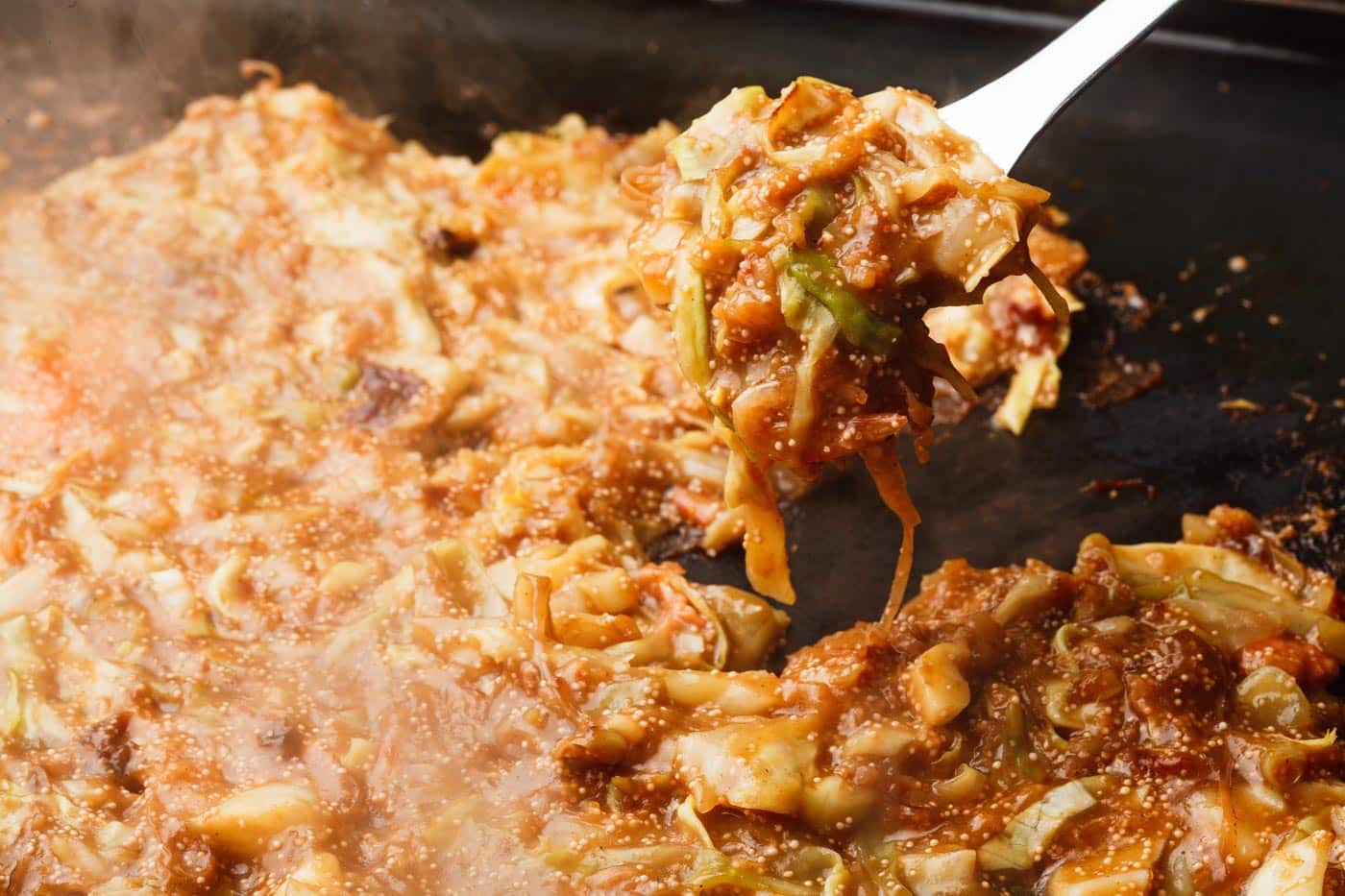
Then, the trick is to scrape it off and, little by little, extract the toasted and crunchy bits of dough. Told like this it may not sound very good, but the result is truly exquisite, we can attest to that!
In a society with such a frenetic pace of life as Japan’s, where people rarely have time to have a leisurely lunch at home, there is a long tradition of prepared food, ready to take away.
Many long-suffering office workers grab a quick bite to eat at their local 7-Eleven every morning and then eat it at work.
And for us, travelers visiting the Land of the Rising Sun, this takeaway food will come in handy to keep us supplied when we go on an excursion.
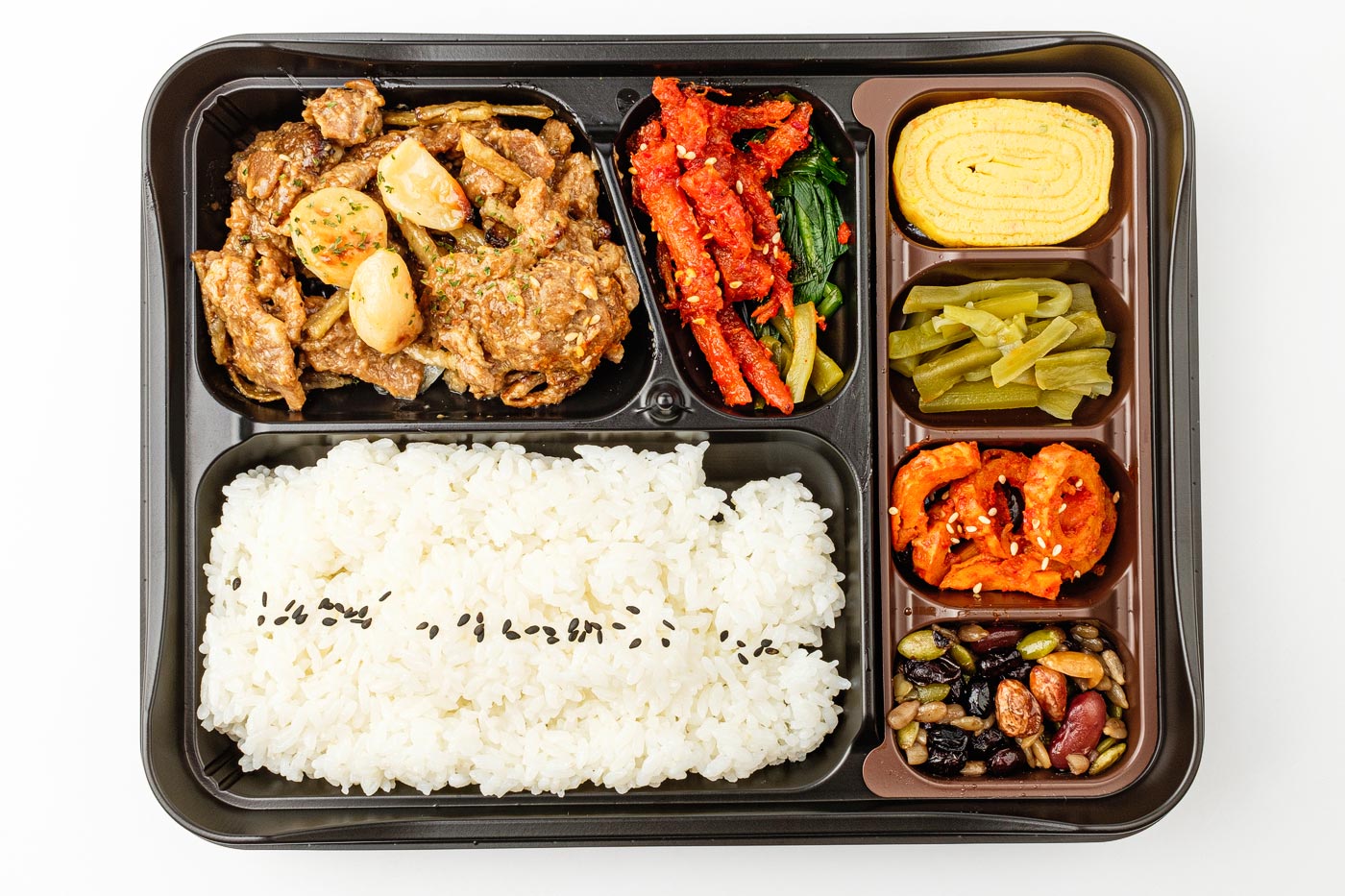
In addition to a wide range of snacks, sandwiches and pastries, there are some typical Japanese takeaway foods that you will like to try. You will find them everywhere, in any supermarket or convini, which is what the Japanese call 24-hour mini-supermarkets, like 7-Eleven.
Bento lunches are packed in a kind of lunch box, so they can be easily transported. Hence the generic name Bento box. In theory, you can also prepare it at home, put it in a lunch box and take it to school, the office or wherever you need to.
But since not everyone likes to cook, in Japan you will find bentos ready to take away (and eat!) on every corner. Some can be eaten cold, and others need to be heated in the microwave.
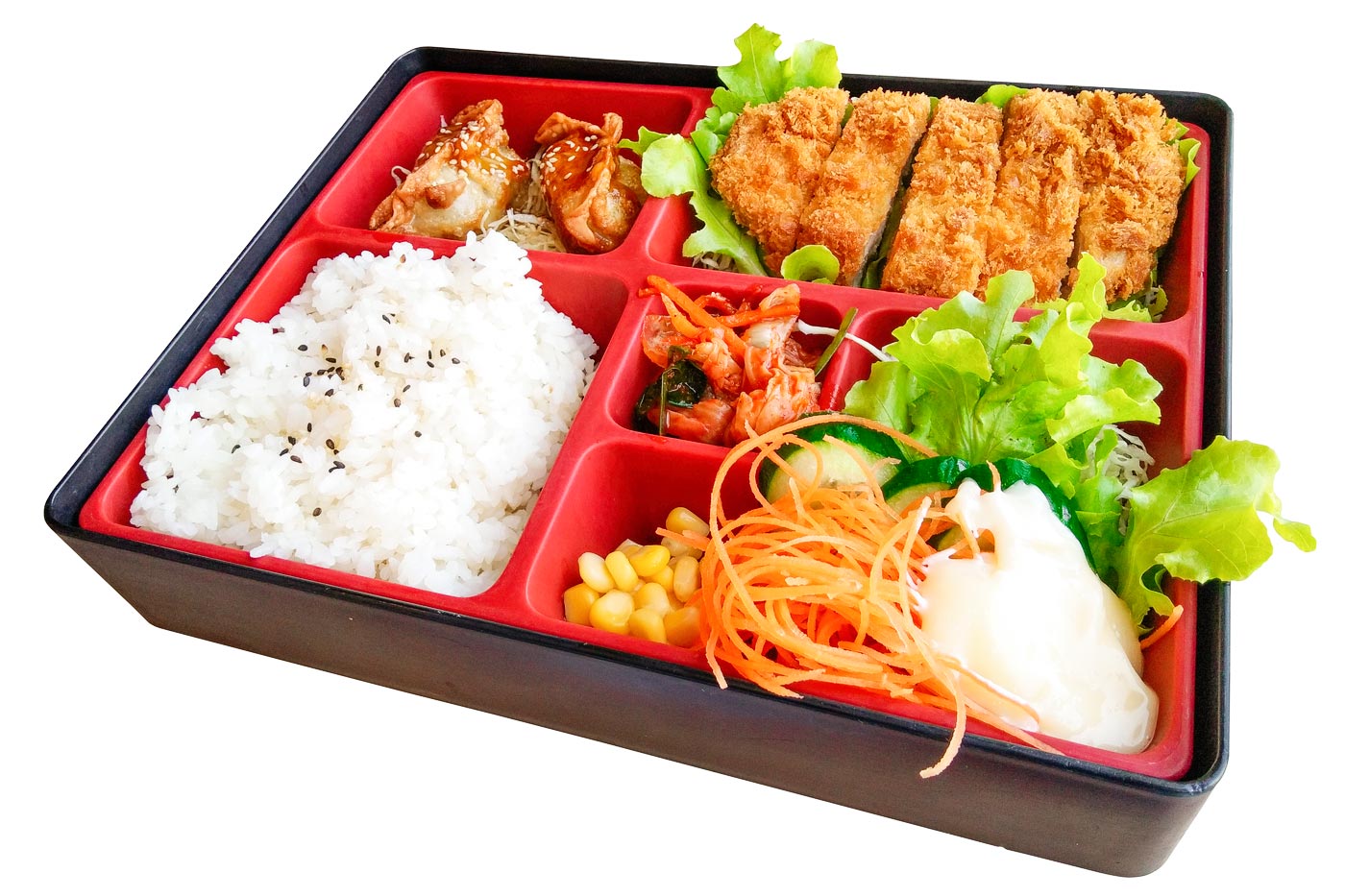
You can put almost anything you want in a bento box; the combinations of ingredients are almost endless. But, generally, you will always find pickled vegetables, a bit of meat or fish, and a good portion of white rice to accompany it. Enough to make a nutritious and balanced lunch.
Onigiri are the Japanese version of our sandwiches. Only instead of bread, the Japanese use white rice. Onigiris are filled rice balls, ideal for storing anywhere and being able to transport them comfortably.
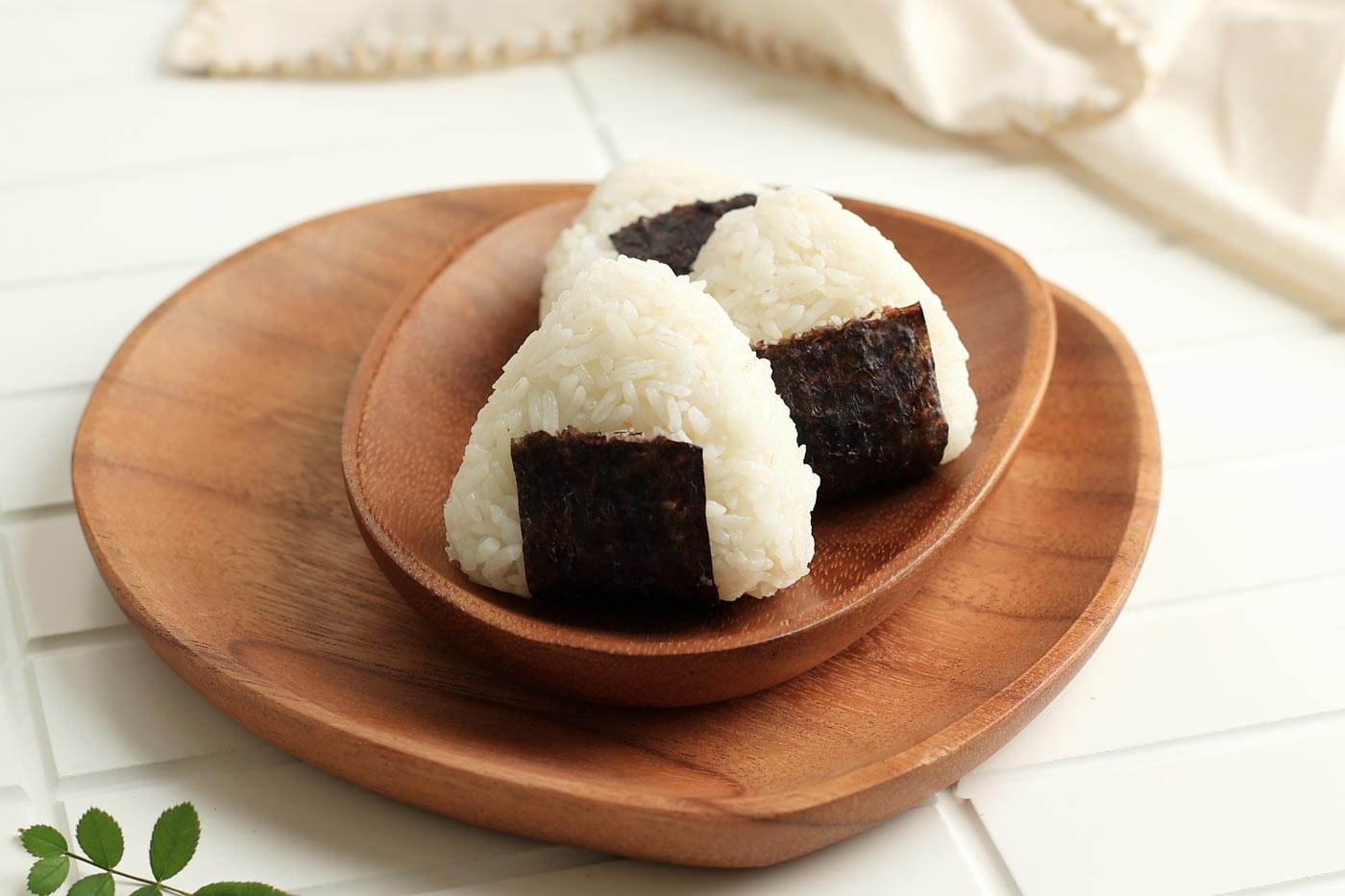
They can be filled with many things, but the most common are fish (boiled or fried) and vegetables, and they are usually wrapped with a bit of dried seaweed. If you are in a hurry, a couple of onigiris can be the perfect solution for lunch or a snack.
This variation of onigiri is not very well known outside of Japan, but we promise you won’t regret trying it. Here the rice ball is wrapped in a thin sheet of fried tofu, and is sometimes accompanied by vegetables, boiled legumes or nuts.
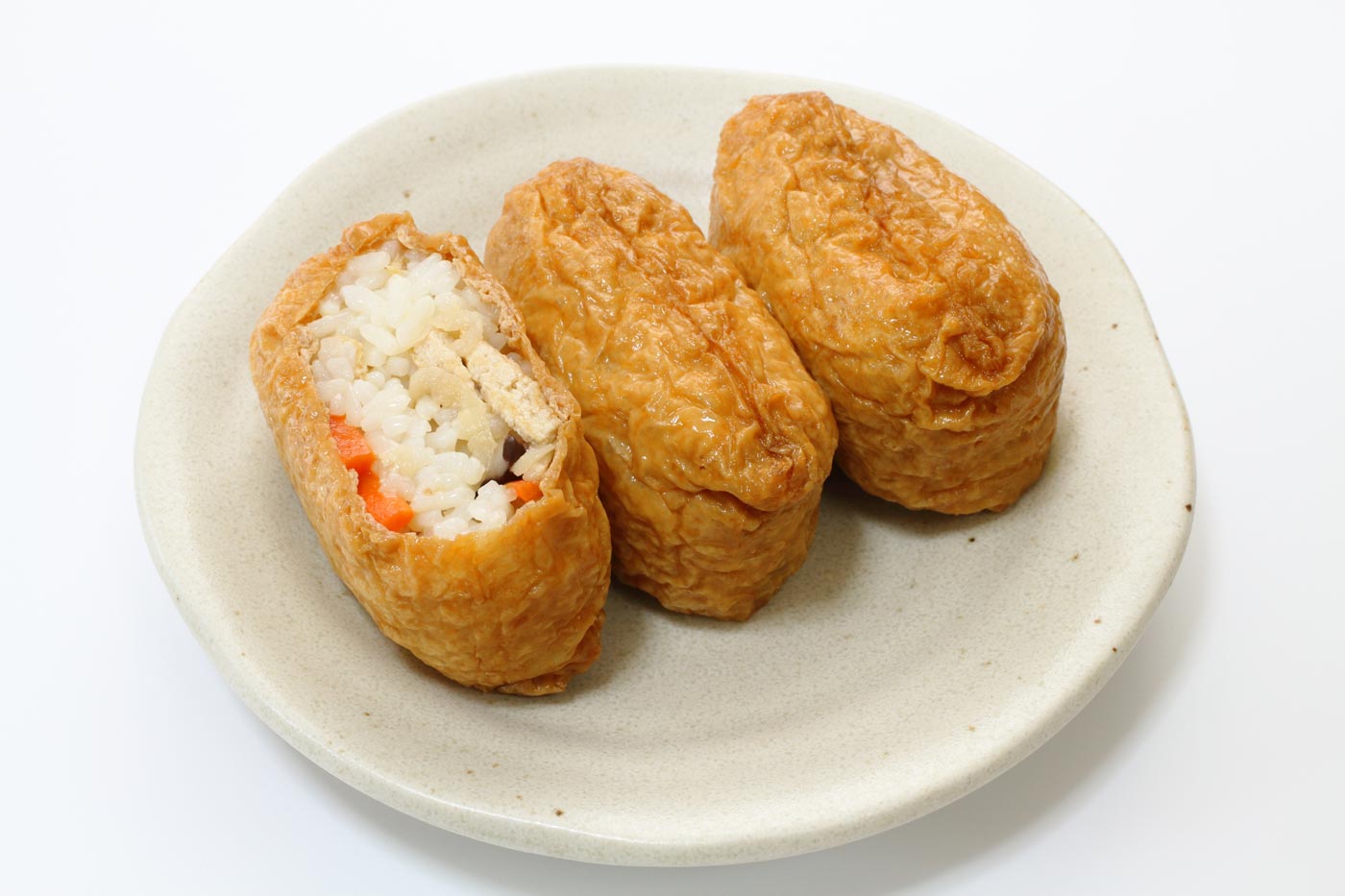
In addition to being very nutritious, fried tofu gives it a sweet touch that is irresistible.
At lunchtime, which here in Japan usually lasts from 11:30 to 14:30, many restaurants offer special, somewhat cheaper menus. These are called Teishoku, individual menus with some of the house specialties, accompanied by a bowl of white rice and a little miso soup. Drinks (water or tea) are usually included.
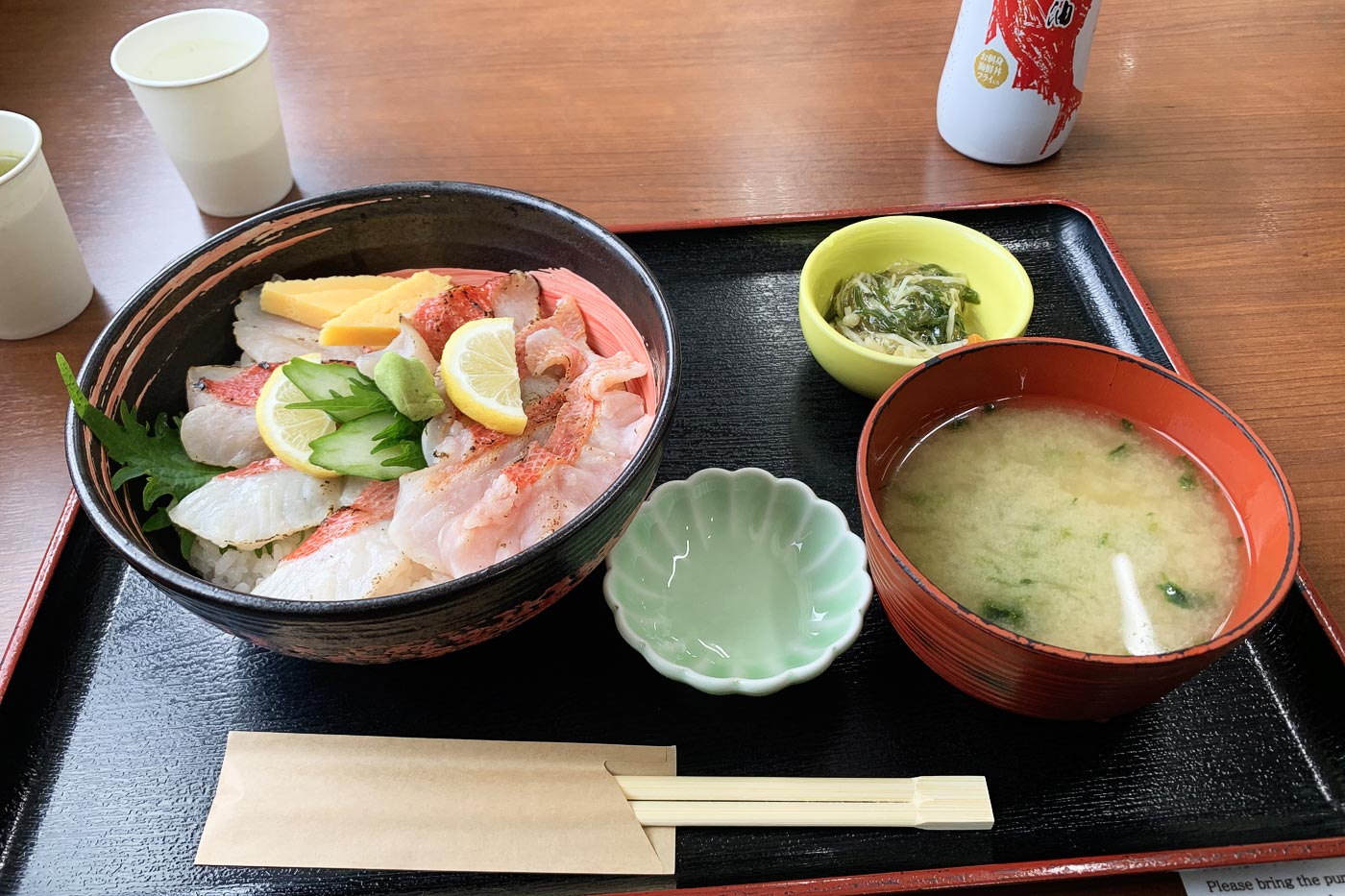
The variety of ingredients is endless, but it is common to see teishoku menus with meat (either chicken, pork or beef), grilled fish, pasta, rice with curry, etc. The portions are designed and calculated to more than fill your stomach, for a modest price.
A guide to Japanese cuisine would never be complete without mentioning the huge variety of pickles that populate the tables of the Japanese. Vegetables, fruits, seaweed, fish… These people will put anything in vinaigrette or brine and make a pickle out of it. Although, in reality, there are lots of different ways to prepare them.
Tsukemono are often served as an accompaniment to other dishes, or as appetizers in their own right. Below we present some of the most common ones.
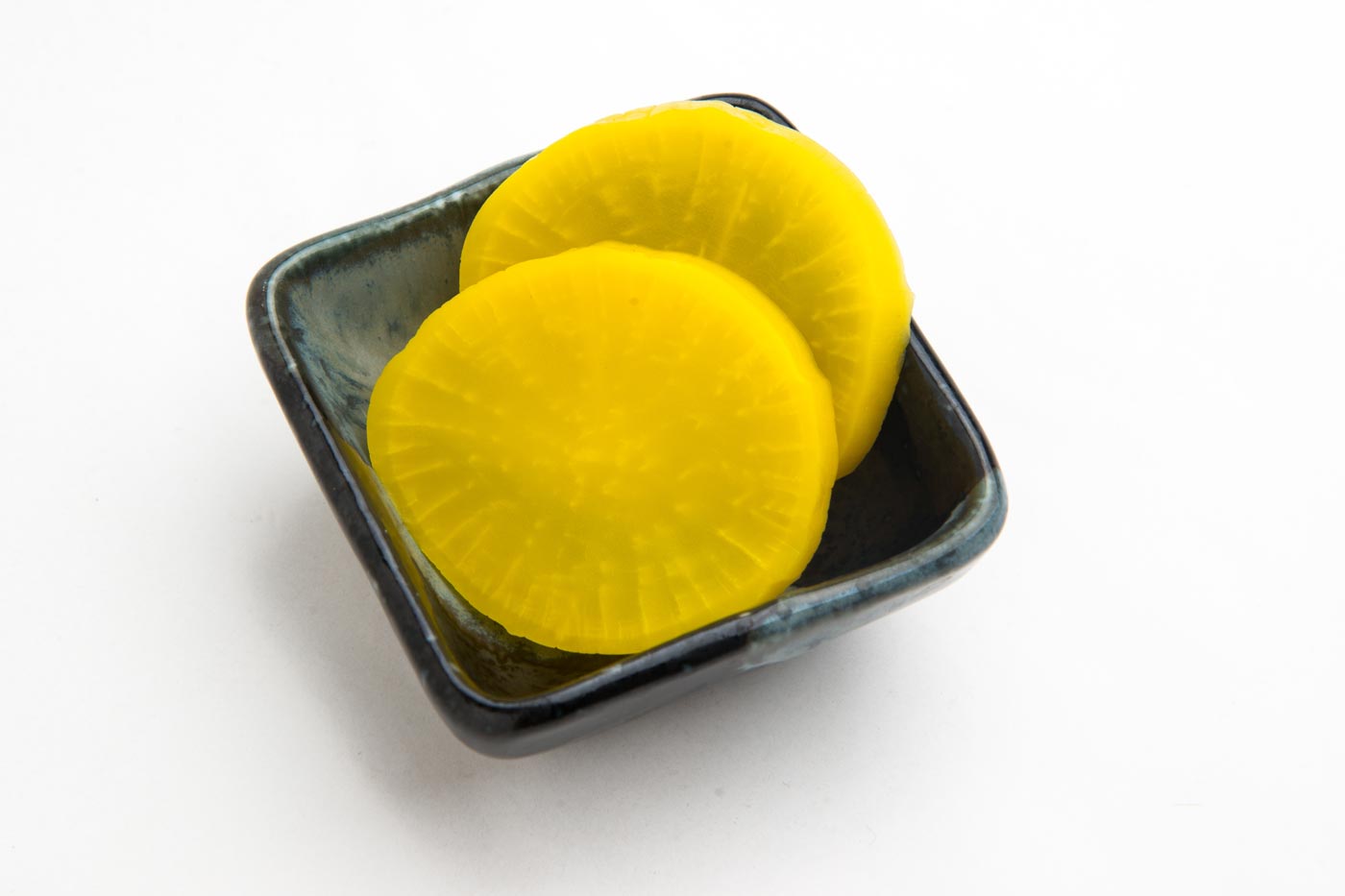
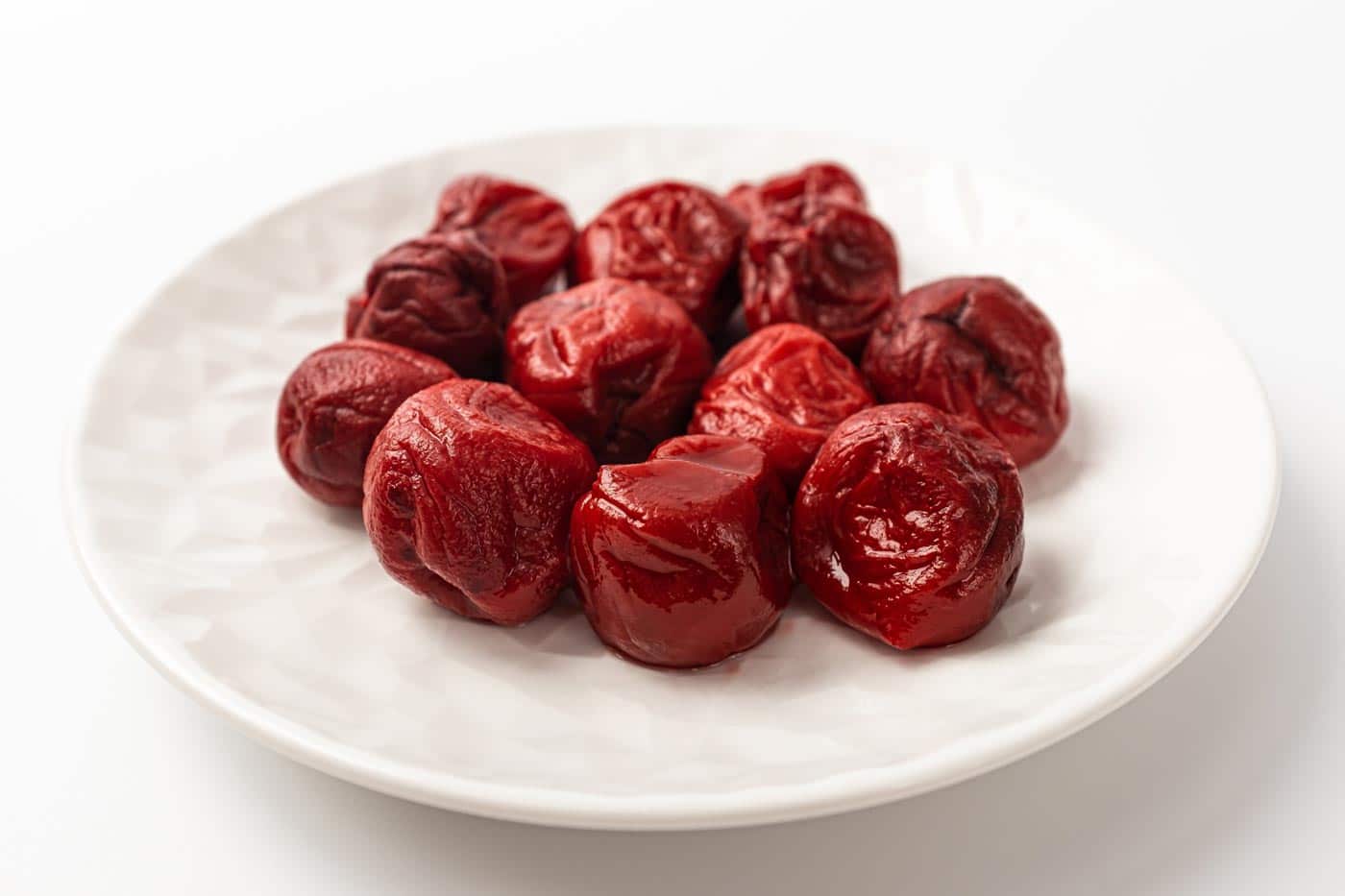
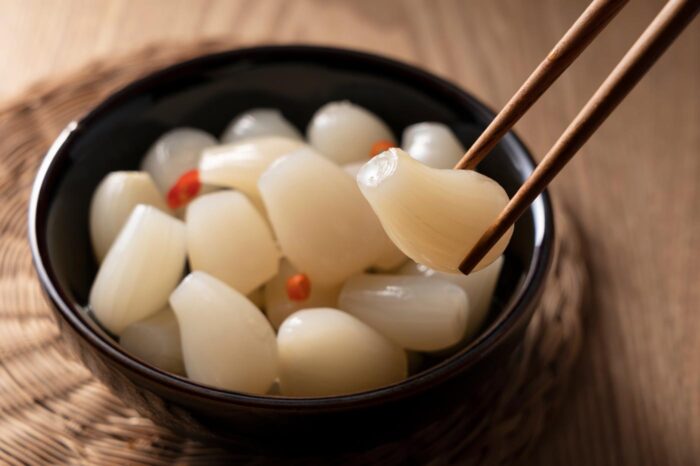
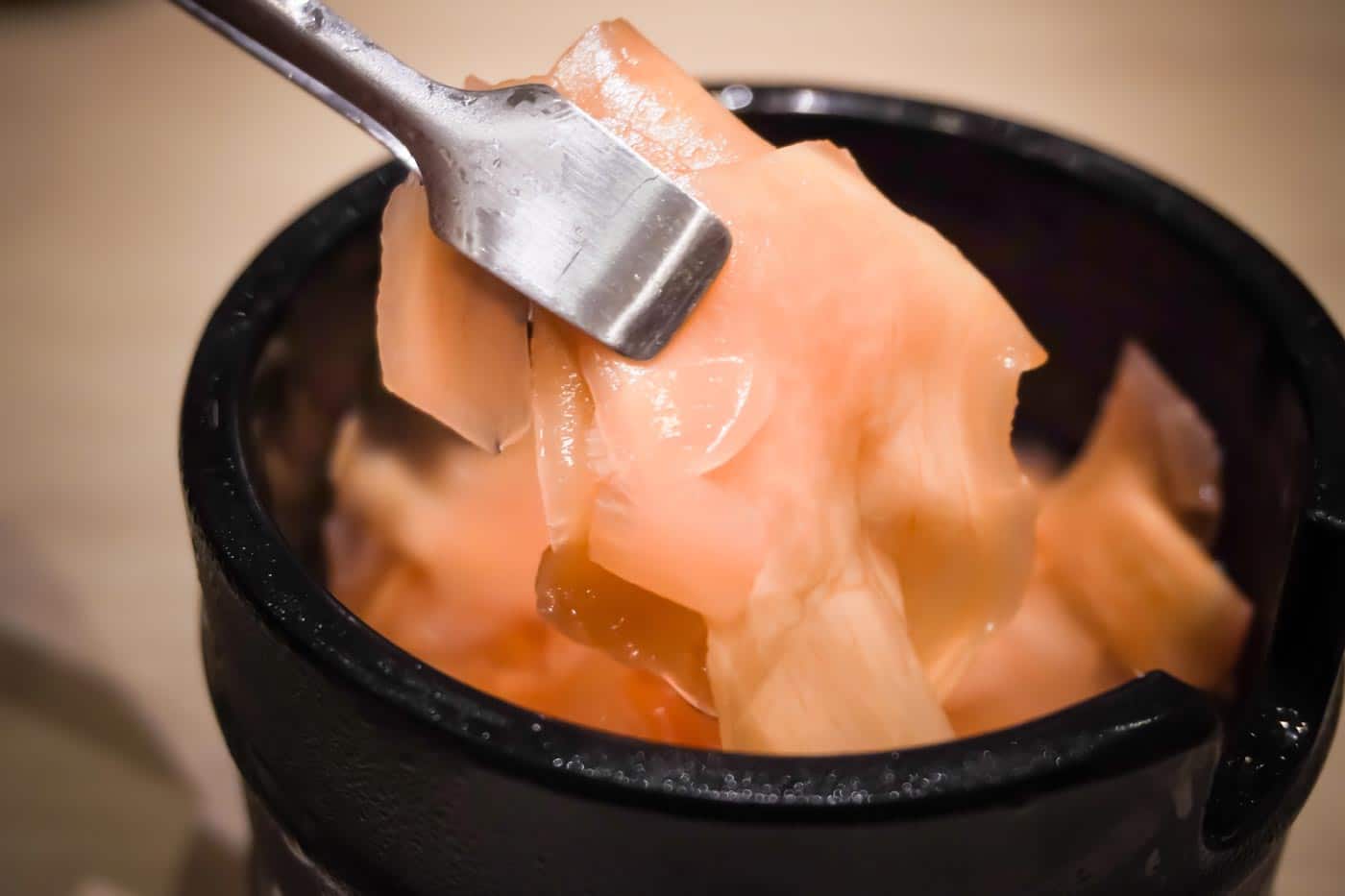
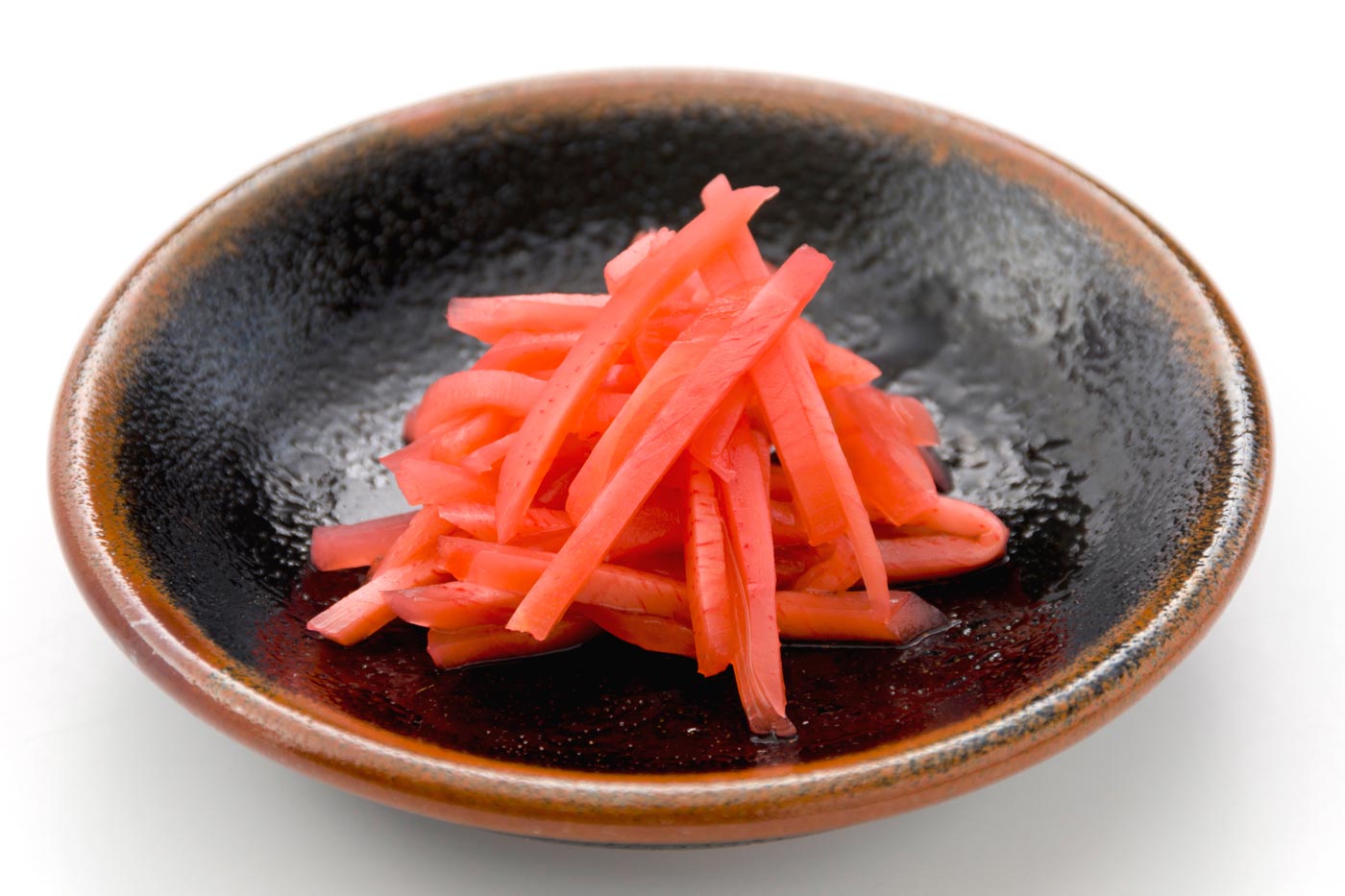
In Japan, it is not considered a place to go out just to drink. Here, when drinks are served, they are always accompanied by some food. The idea is not very different from pinchos or tapas in Spain.
In Japanese izakayas (traditional taverns) you will find a varied menu with a wide variety of appetizers and snacks, ideal to accompany your drink. The variety is endless, but here we tell you about some of the most popular ones.
Whenever there is a drink involved, you can’t miss eda mame. These small soybean pods are cooked and served (sometimes cold, sometimes hot) with a little salt. The idea is to eat the small fruit (a kind of bean) inside, as if they were sunflower seeds.

Eda mame is a healthy, light snack that goes down a treat at any time of day. Plus, it’s addictive as hell; once you start snacking, there’s no stopping!
Another typical appetizer, especially in summer, is cucumber. Extremely refreshing and easy to eat, it is usually served raw and cut into chunky cubes or slices, dressed with a vinaigrette sauce, although the seasoning can vary according to the taste of the chef… and the consumer.
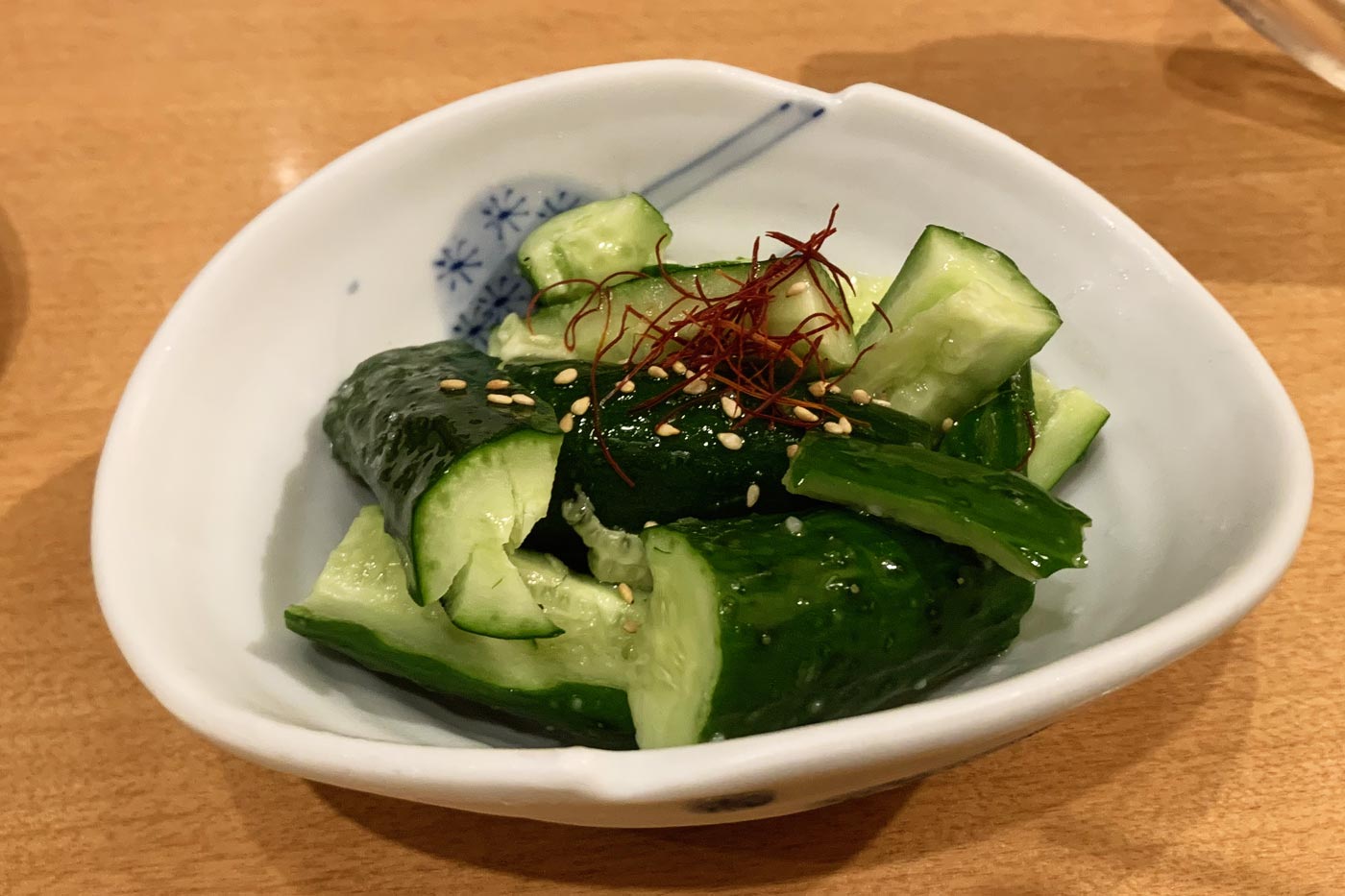
Cabbage salad (kyabetsu, from the English word “cabbage”) is another of those tapas that you will always see in an izakaya. It is a very simple dish: chopped cabbage leaves with some dressing, such as sesame oil or vinaigrette sauce, and little else. But it is an ideal accompaniment to other more substantial appetizers.
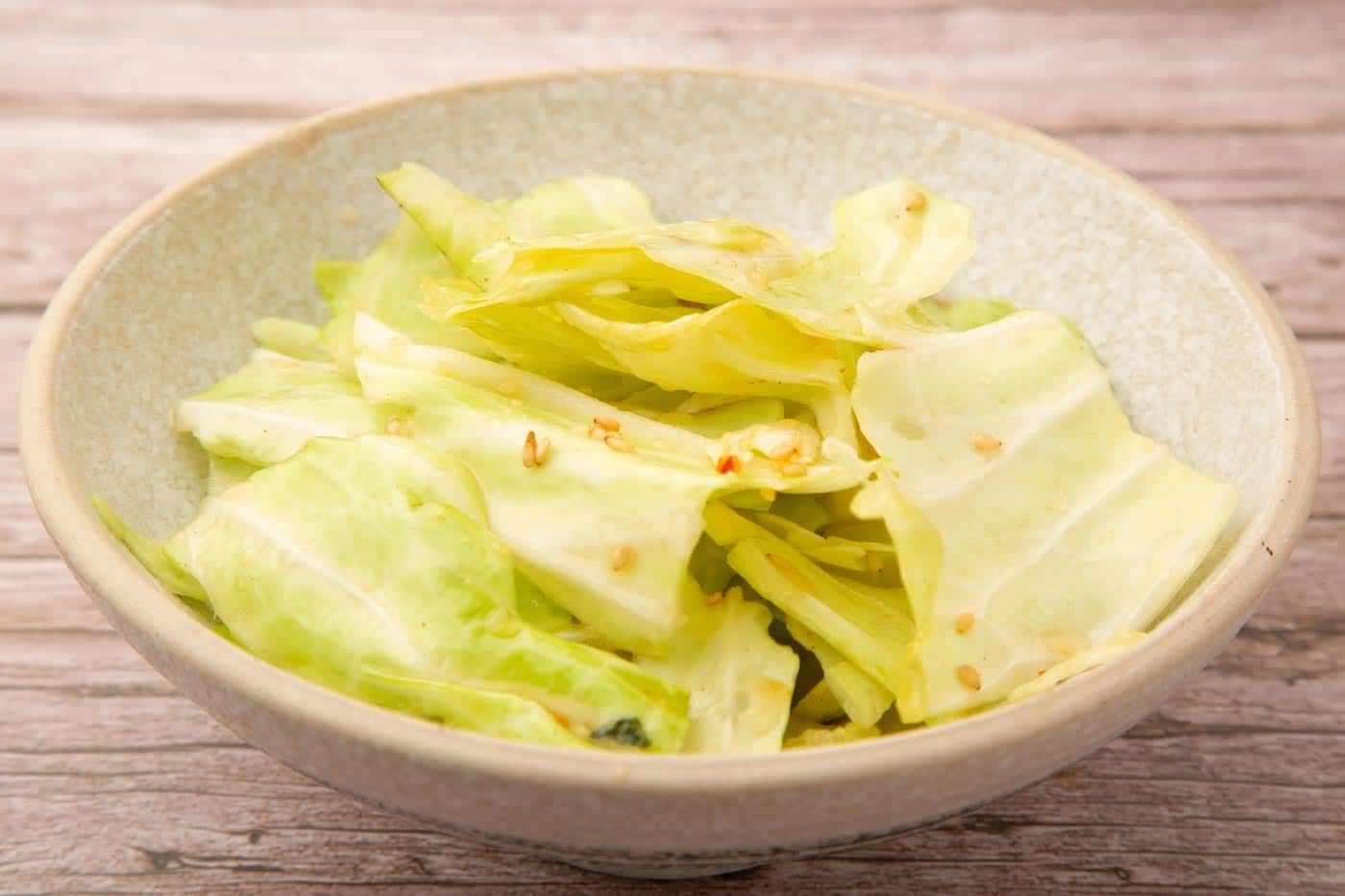
Tako-yaki, these little balls filled with octopus and sweet cream, are a delight for children and adults alike at Japanese summer festivals. They are also a very typical snack in bars and izakayas of all kinds.
You will always see them in packs of 6 or 8 units, seasoned with their special sauce, a little mayonnaise and tuna flakes sprinkled on top.
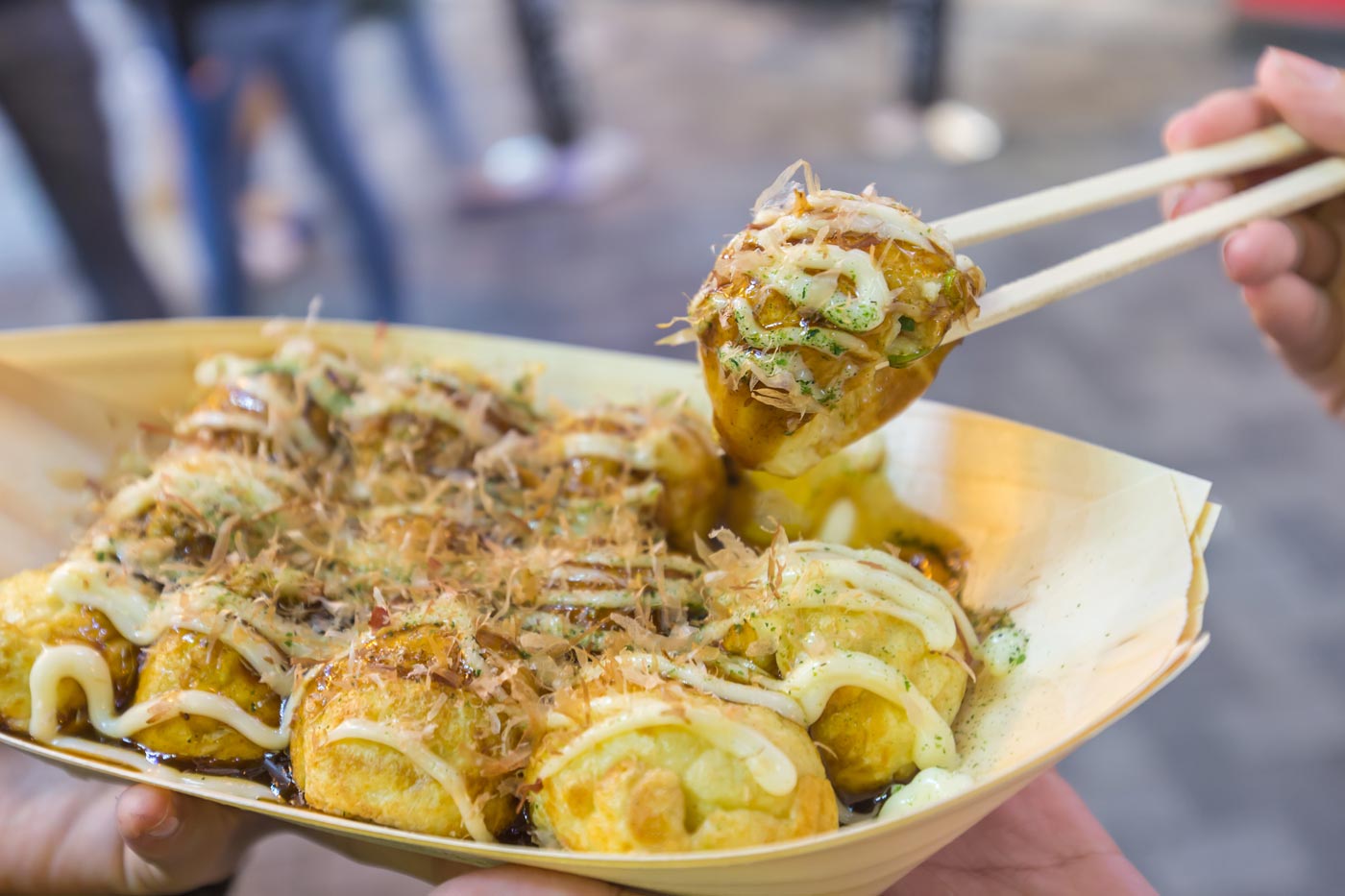
But be careful not to burn yourself! Because tako-yaki balls are served very, very hot. Forewarned is forearmed…
The Japanese have their own version of the egg omelet, made with a pinch of sugar and fish stock, which gives it a very special flavor and sweetness.
Furthermore, the shape is also different from what we are used to in the West because, when cooking it, the Japanese roll the omelette over itself, then cut the resulting roll into small pieces, ideal for eating in one bite.
Tamago-yaki can be accompanied by all kinds of toppings and accompaniments, but soy sauce and grated daikon are a must.
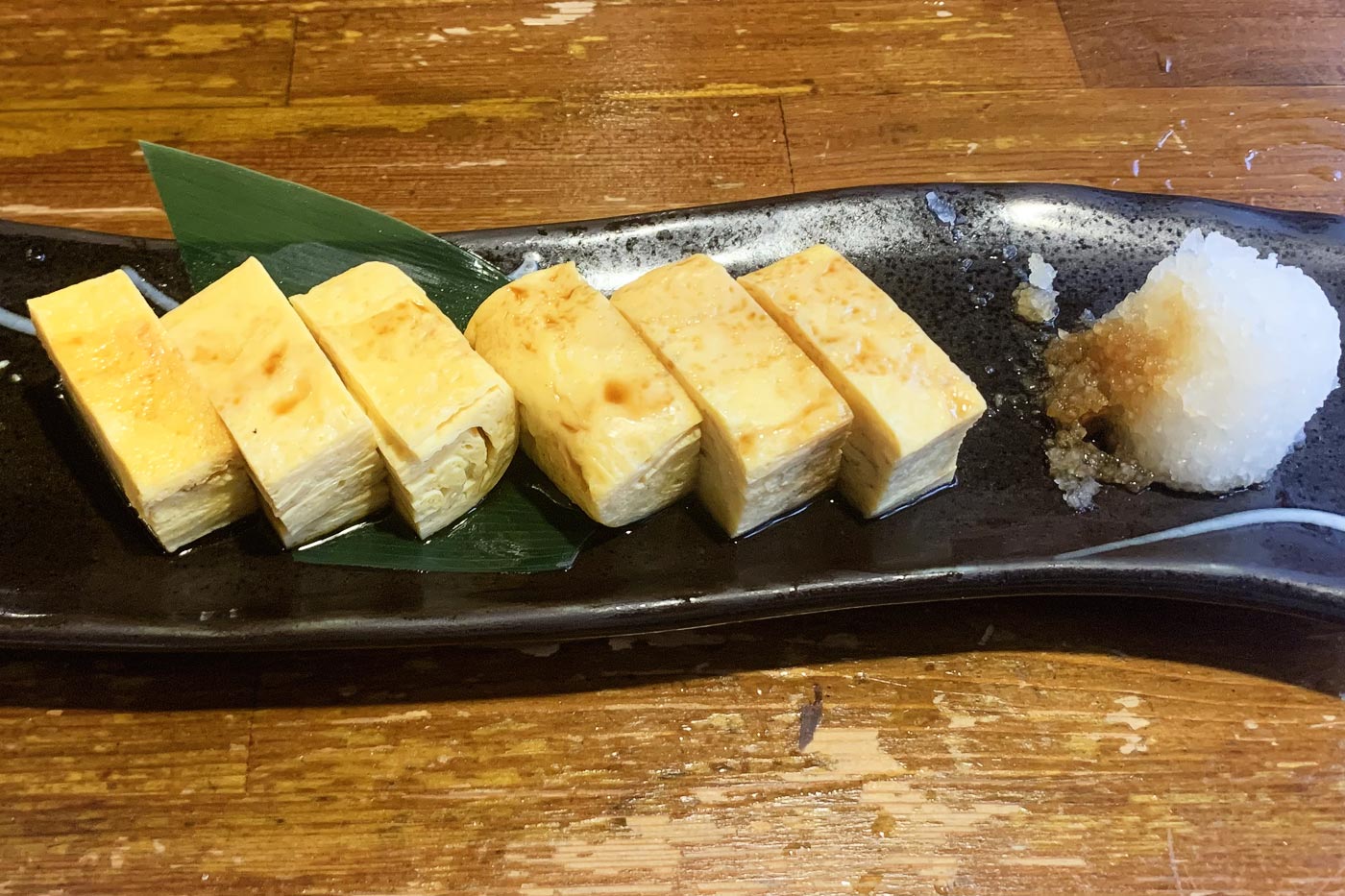
Other typical specialties of Japanese taverns and izakayas are dishes that we have already mentioned above in this guide, such as Gyoza, Yakitori skewers or Kara-age fried chicken. Don’t miss out on trying them!
The list of typical Japanese foods could go on forever, but with these we have mentioned, we believe you already have enough to start with.
And that’s without leaving out traditional Japanese cuisine. Because on the streets of any city in the country you will also find an overwhelming number of establishments serving Chinese, Indian, Southeast Asian, French, Italian, Spanish food… and from any corner of the world you can imagine.
You will not be short of variety and options to choose from. What is certain is that, on your trip to Japan, you will not go hungry!